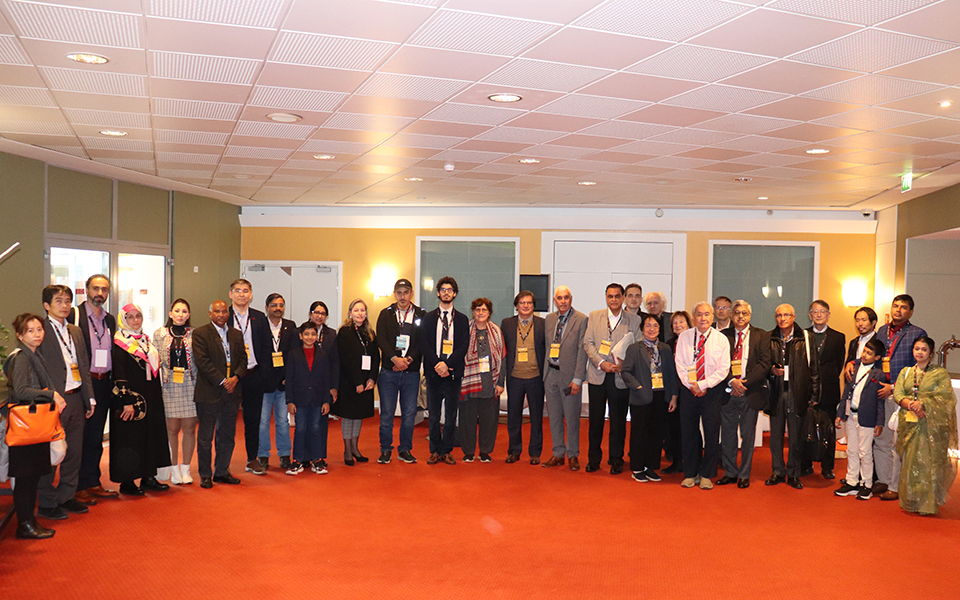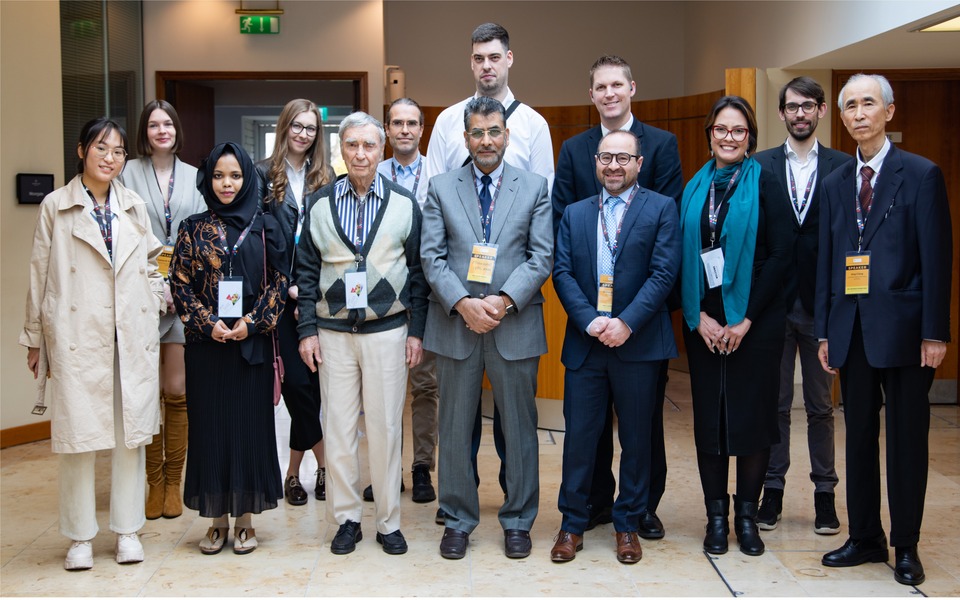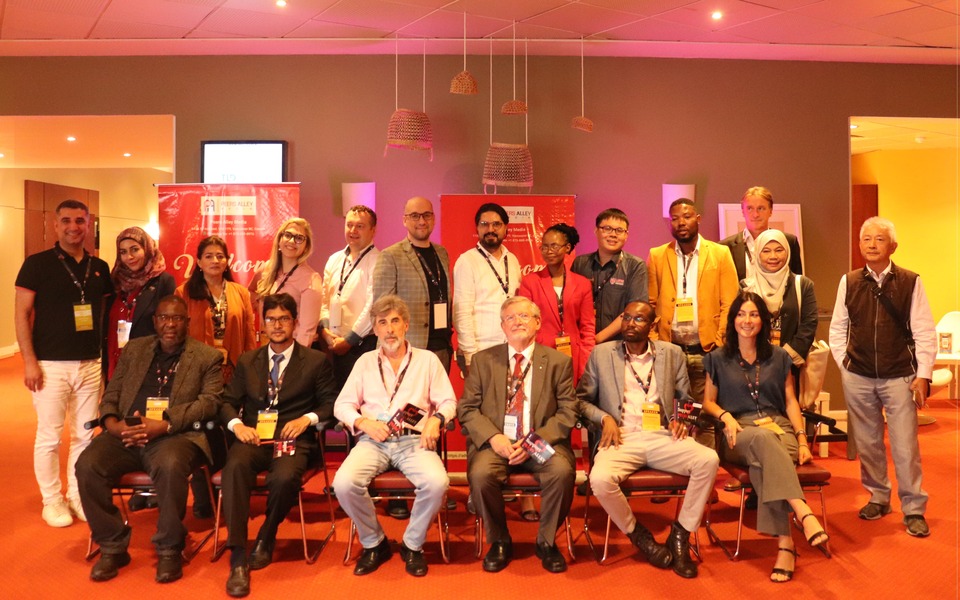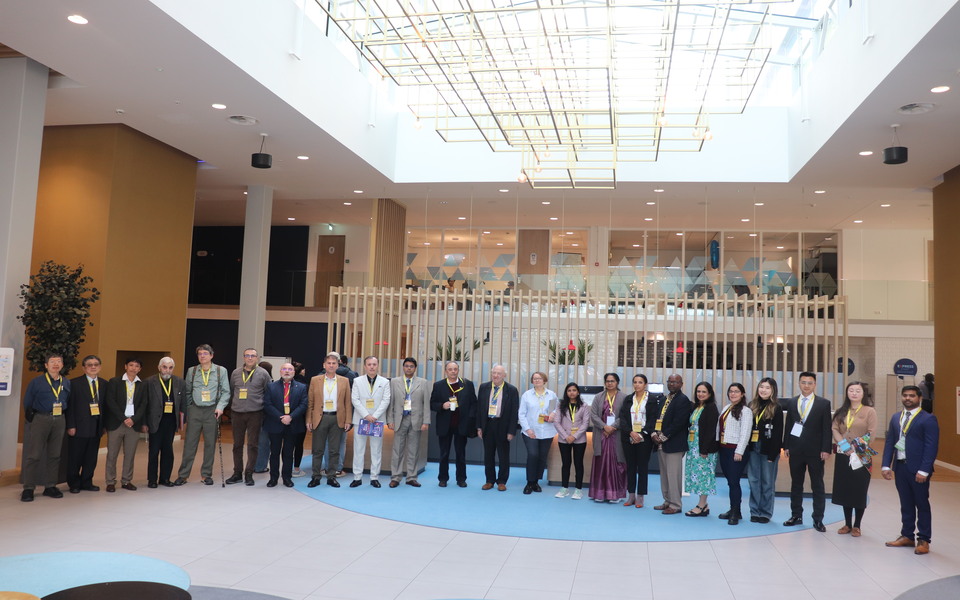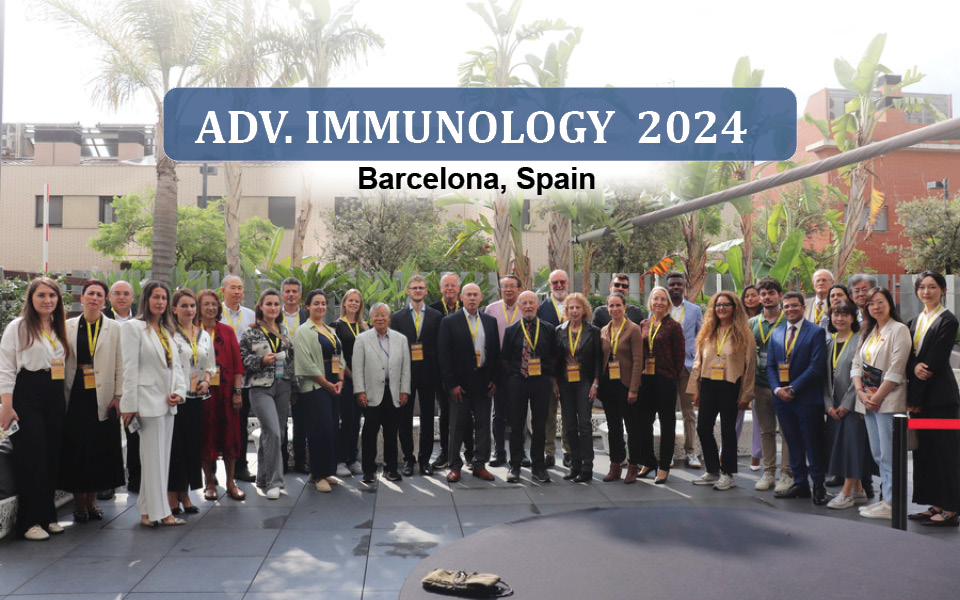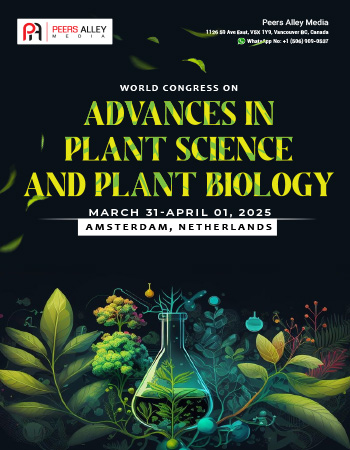
Brain Disorders 2025
Peers Alley Media ,Canada

Primary goal of attending an international conference is to present a paper to the experts and influencers. It gives you a platform to exchange your interest-related thoughts, paving the way for possible future collaborations.

Use this platform to build connections with an elite group of wise men and women to enhance your intellect. Young entrepreneurs, this is a great platform to connect with your peers.

Knowledge is Power. Knowledge teaches skills. Skills define excellence. Use this platform to become cognizant of your interest area to achieve excellence in your domain.

Attending a conference give you opportunity to get your abstract or paper published in conference proceedings

Meet and greet a myriad of industry professionals and academia experts with common interest. Every meal will be an opportunity to meet and interact with fellow researchers, attendees and experts.

Expand your professional competency and learn useful tips and tricks of your industry in our skill-building workshops.

Explore insights on recent advancements, new equipment, new techniques, and unpublished data, learn from thought-leaders and get to network with a great line up of speakers.

Our exhibits floor offers the attendees with a dynamic display of the latest products with cutting-edge technology.

Investing in you is the best investment. Peers Alley conferences give the patrons with a feeling of the serendipity of real learning, skill development in strategic workshops, networking and start-up opportunities, thus, is value for money.

Attending the conference gives you much needed break from your regular duties. It also allows you to explore new cities, culture and meet new people. You will feel energized and rejuvenated to return to the university and continue with the job after attending the conference.
Conferences are vital forum for academic researchers and business leaders. "It involves multiple presentations, interactive breakout sessions, hands-on product demonstrations and unrivalled networking opportunities".
We have invited some of the world's most sought-after keynote speakers, experts, brand ambassadors, and industry leaders to share their thoughts and ideas with our conference guests.
Register Now
Join us at the the cutting edge of innovation and discovery at the Advances in Plant Science and Plant Biology 2025 Conference, where the future of plant-based biologics and sustainable agriculture is being shaped. With the global plant-based biologics market projected to reach $182.9 million by 2031, now is the time to engage with leading experts, plant biologists, geneticists, ecologists, agronomists, botanists, molecular biologists, plant pathologists, horticulturists, soil scientists, environmental scientists, biotechnologists, academic groups, and industrial partners from across the globe.
Why attend the Adv. PSPB 2025 Conference? Here are some compelling reasons:
Cutting-edge Research: Gain insights into the latest advancements in plant science, biology, genetics, and ecology
Networking Opportunities: Forge new collaborations and partnerships with scientists, institutions, and organizations.
Addressing Global Challenges: Deepen your understanding of the critical role that plants play in addressing global challenges such as food security, climate change, and human well-being.
Innovative Technologies: Learn about the latest technologies and methodologies shaping the future of plant research and agriculture.
Policy Recommendations: Participate in discussions on policy recommendations and advocacy initiatives to support sustainable plant management and conservation efforts.
Join us as we come together to advance knowledge, foster collaboration, and create a brighter future for our planet and its inhabitants.
about Adv.PSPB 2025 conference
Dear Esteemed Participants,
Welcome to the forefront of botanical innovations at the World Congress on Advances in Plant Science and Plant Biology (Adv. PSPB 2025)!
Date: March 31 - April 01, 2025
Venue: Amsterdam, Netherlands
In a world where the sustainability of our ecosystems and the security of our food sources are increasingly challenged, your presence here today is not just significant—it's essential. This congress isn't just another gathering; it's a beacon of hope and discovery in the realm of plant sciences, where the seeds of groundbreaking research are sown, nurtured, and harvested for the betterment of our planet.
Together, we stand at the intersection of tradition and innovation, where ancient wisdom meets cutting-edge technology. From unlocking the secrets of plant genomes to harnessing the power of synthetic biology, we are on the brink of unprecedented breakthroughs that will revolutionize agriculture, conservation, and biotechnology.
As we embark on this collective journey, let us not forget the profound interconnectedness of all living beings. Plants are not just passive bystanders in the story of life; they are the architects of our ecosystems, the providers of our sustenance, and the guardians of our planet's future. With each discovery made and each idea shared at this congress, we honor their vital role in shaping the world around us.
So, let us seize this opportunity to dive deep into the mysteries of the botanical world, to exchange knowledge, to kindle collaborations, and to cultivate solutions that will propel us towards a more resilient and sustainable future.
Thank you for being a part of this transformative journey. Together, let us sow the seeds of change and nurture a world where plants thrive, and humanity flourishes.
Warm regards,
Adv. PSPB 2025
Organizing Committee
Peers Alley Media, 1126 59 Ave East, V5X 1Y9, Vancouver BC, Canada

Tennessee Tech University, USA

The Davey Tree Expert Company, USA

Alabama A&M University, USA

University of Illinois, USA

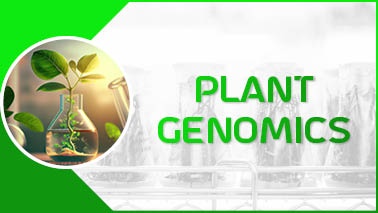
It is the study of the genetic composition, structure, function, and evolution of plant genomes. This field combines advanced techniques in molecular biology, bioinformatics, and genetics to understand the intricate details of plant DNA, leading to insights that can revolutionize agriculture, ecology, and biotechnology. Here’s a detailed overview of plant genomics:
Key Concepts and Techniques:
Genome Sequencing:
• Whole Genome Sequencing (WGS)
• Next-Generation Sequencing (NGS)
Functional Genomics:
• Transcriptomics
• Proteomics
• Metabolomics
Applications of Plant Genomics:
• Crop Improvement
• Genetic Engineering
• Marker-Assisted Selection (MAS)
• Stress Resistance
• Conservation Biology
Plant genomics holds immense potential for addressing global challenges such as food security, climate change, and sustainable agriculture. By unlocking the genetic secrets of plants, scientists can develop innovative solutions to enhance crop productivity, resilience, and nutritional quality, ensuring a sustainable future for humanity.
Tags
Plant Pathology Conferences
Plant Biology Conferences 2025 USA
Plant Genetics Conferences
Plant Biology Conferences 2025 Asia
Plant Science Conferences 2025 Europe
Plant Science Conferences 2025 USA
Plant Biology Meetings
Plant Science Conferences
Plant Biology Conferences 2025
Plant Molecular Biology Conferences 2025 Europe
Plant Science Conferences 2025 Asia
Plant Biology Conferences
Plant Biotechnology Conferences 2025 Aisa
Plant Biology Conferences 2024
Plant Synthetic Biology Conferences
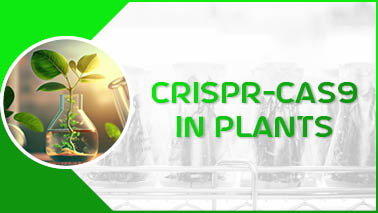
It is a revolutionary genome-editing technology that has transformed genetic research and biotechnology, including plant science. This system allows for precise, targeted modifications to DNA, making it an invaluable tool for enhancing crop traits, studying gene function, and developing new plant varieties. Here’s an in-depth look at the application of CRISPR-Cas9 in plants:
Mechanism of CRISPR-Cas9 :
CRISPR-Cas9 (Clustered Regularly Interspaced Short Palindromic Repeats and CRISPR-associated protein 9) is derived from a bacterial immune system that defends against viral infections. The mechanism involves two main components:
• Cas9 Protein
• Guide RNA (gRNA)
Applications in Plant Science :
Trait Improvement :
• Yield and Quality
• Disease Resistance
• Stress Tolerance
Functional Genomics :
• Gene Knockout and Knock-in
• Gene Regulation
Development of New Varieties :
• Domestication of Wild Species
• Biofortification
Advantages of CRISPR-Cas9 in Plant Breeding :
• Precision and Efficiency
• Versatility
• Cost-Effectiveness
Future Prospects :
• Enhanced Precision
• Multiplexing
• Integration with Other Technologies
CRISPR-Cas9 has opened up new horizons in plant genomics and biotechnology, offering tools to address critical challenges in agriculture and beyond. By enabling precise genetic modifications, CRISPR-Cas9 holds the promise of more sustainable, productive, and resilient agricultural systems.
Tags
Plant Biology Conferences
Plant Biotechnology Conferences 2025 Aisa
Plant Science Conferences 2025 Europe
Plant Pathology Conferences
Plant Biology Conferences 2025 Japan
Plant Biology Meetings
Plant Genetics Conferences 2025 USA
Plant Biotechnology Conferences
Plant Biology Conferences 2025 Australia
Plant Science Conferences 2025 China
Plant Molecular Biology Conferences
Agricultural Biotechnology Conferences
Plant Biology Conferences 2025 USA
Plant Science Conferences 2025 Canada
Plant Biology Conferences 2025 Europe
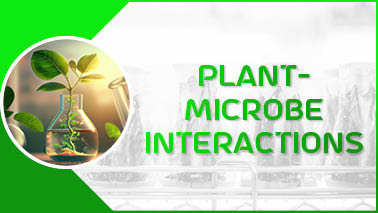
The interactions are complex and diverse relationships between plants and microorganisms, encompassing a spectrum of interactions from mutualism to antagonism. These interactions are crucial for the health, growth, and productivity of plants, influencing ecosystems and agricultural practices.
Mutualistic Interactions :
Rhizobia and Legumes:
• Nitrogen Fixation
Mycorrhizal Fungi:
• Enhanced Nutrient Uptake:
• Protection Against Pathogens:
Commensalistic Interactions :
• Epiphytic Bacteria and Plants
• Surface Dwellers
Pathogenic Interactions :
Pathogenic Bacteria, Fungi, and Viruses:
• Disease Development
Biotrophic and Necrotrophic Pathogens:
• Biotrophs
• Necrotrophs:
Beneficial Interactions Beyond Nutrition :
Plant Growth-Promoting Rhizobacteria (PGPR):
• Enhanced Growth and Stress Tolerance
Biocontrol Agents:
• Natural Pest Control
The Role of the Plant Microbiome :
• Holobiont Concept
• Microbiome Engineering
• Agricultural Applications
These interactions are fundamental to plant biology and ecology. These interactions can significantly influence plant health, nutrient cycling, and ecosystem stability. As research advances, the potential to manipulate these interactions for agricultural and environmental benefits continues to grow, offering promising avenues for innovation in plant science and agronomy.
Tags
Plant Biology Conferences 2024
Plant Science Conferences 2025
Plant Genetics Conferences 2025 USA
Plant Genomics Conferences
Plant Science Conferences 2025 USA
Agricultural Biotechnology Conferences
Plant Genetics Conferences
Plant Pathology Conferences
Plant Biology Conferences 2025 Japan
Plant Biotechnology Conferences 2025 Aisa
Plant Biology Conferences 2025 Australia
Plant Molecular Biology Conferences 2025 Europe
Plant Science Meetings
Plant Science Conferences 2025 China
Plant Biology Meetings
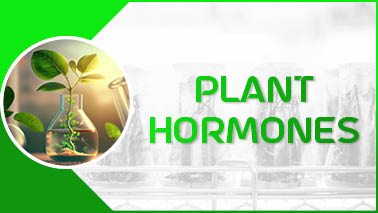
Plant hormones, also known as phytohormones, are naturally occurring organic compounds that play crucial roles in regulating various aspects of plant growth and development. They influence processes such as germination, flowering, fruit development, and responses to environmental stimalation. The major classes of plant hormones are auxins, gibberellins, cytokinins, ethylene, and abscisic acid, each with distinct functions and modes of action to modulate plant physiology.
Auxins :
• Primary Functions: cell elongation, apical dominance, root initiation, and vascular differentiation.
• Mechanisms: promote cell elongation by loosening the cell wall , influence gene expression that regulate transcription factors.
• Applications: widely used in agriculture and horticulture to promote rooting in cuttings, regulate fruit set, and control weed growth
Gibberellins :
• Primary Functions: seed germination, stem elongation, flowering, and fruit development.
• Mechanisms: break seed dormancy by stimulating the production of enzymes that degrade stored food reserves , promote stem elongation by enhancing cell division and elongation.
• Applications: used to improve fruit size in grapes, delay aging in leaves and fruits.
Cytokinins :
• Primary Functions: promote cell division, delay leaf senescence, and are involved in shoot formation and differentiation.
• Mechanisms: influencing gene expression and promoting cell division.
• Applications: used to promote shoot proliferation in tissue culture and delay the yellowing of leafy vegetables and flowers, extending their shelf life.
Abscisic Acid (ABA):
• Primary Functions: crucial for seed dormancy, drought tolerance, and stomatal closure.
• Mechanisms: triggering the closure of stomata to reduce water loss, maintains seed dormancy by inhibiting germination .
• Applications: used to enhance drought tolerance in crops and manage plant stress responses.
Ethylene :
• Primary Functions: involved in fruit ripening, leaf abscission, and response to mechanical stress.
• Mechanisms: promotes the ripening of fruits by regulating genes involved in cell wall degradation, pigment synthesis, and aroma production.
• Applications: used to control the timing of fruit ripening, induce leaf abscission in crops like cotton for easier harvesting.
Other Plant Hormones :
In addition to these five major classes, plants produce other hormones such as brassinosteroids, jasmonates, and salicylic acid.
Plant hormones are vital regulators of plant life .Understanding their mechanisms and innovative applications in agriculture, horticulture, and biotechnology, aimed at improving crop productivity, quality, and resilience to environmental challenges. Advances in plant hormone research continue to reveal new insights into their complex roles and pave the way for sustainable agricultural practices.
Tags
Plant Synthetic Biology Conferences
Plant Biology Conferences 2025 China
Plant Biology Conferences 2025
Plant Genomics Conferences
Plant Biology Conferences 2025 USA
Plant Science Conferences 2025 Asia
Plant Science Conferences 2025 Europe
Plant Biology Meetings
Plant Biotechnology Conferences 2025 Aisa
Plant Molecular Biology Conferences 2025 Europe
Plant Molecular Biology Conferences
Plant Biology Conferences 2025 Australia
Plant Science Conferences 2024
Plant Science Conferences 2025
Plant Science Conferences
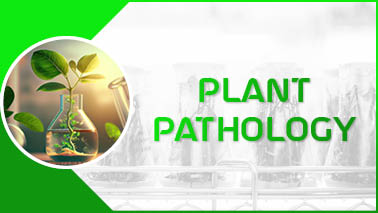
Plant pathology is a branch of botany that focuses on the study of diseases in plants. Just like humans and animals, plants are susceptible to diseases caused by various pathogens such as fungi, bacteria, viruses, nematodes, and parasitic plants. These diseases can have detrimental effects on crop yields, food security, and ecosystem health, making plant pathology a crucial field in agriculture and environmental science.
Plant pathologists investigate the causes, mechanisms, and management of plant diseases. They work to understand the interactions between pathogens, plants, and the environment, aiming to develop strategies for disease prevention, control, and mitigation. Their research spans various disciplines including microbiology, genetics, molecular biology, ecology, and epidemiology.
There are several types of plant diseases:
• Fungal Diseases: Fungi are among the most common pathogens affecting plants. They cause diseases such as powdery mildew, rusts, blights, and rots. Fungal pathogens can infect different parts of the plant including leaves, stems, roots, and fruits, leading to symptoms like wilting, discoloration, lesions, and decay.
• Bacterial Diseases: Bacterial pathogens infect plants through wounds or natural openings, causing diseases like bacterial leaf spot, fire blight, and citrus canker. Bacterial diseases often manifest as leaf spots, cankers, and wilting, and they can spread rapidly under favorable environmental conditions.
• Viral Diseases:Viruses are microscopic infectious agents that can only replicate inside living cells. They are often transmitted by vectors such as insects, nematodes, or through infected seeds or vegetative propagation materials. Viral diseases in plants result in symptoms like mosaic patterns, stunted growth, leaf curling, and yellowing.
• Nematode Diseases: Nematodes are tiny, worm-like organisms that can parasitize plant roots, causing diseases like root-knot nematodes and cyst nematodes. These pests interfere with the plant's ability to absorb water and nutrients, leading to reduced growth, wilting, and yield loss.
• Parasitic Plant Diseases: Some plants, known as parasitic plants, derive their nutrients from other host plants. Parasitic plants such as dodder and witchweed can weaken or kill their hosts, posing significant challenges in agriculture and natural ecosystems.
Plant pathologists employ various techniques and tools to study plant diseases, including microscopic observation, molecular diagnostics, genetic sequencing, and field surveys. By understanding the biology and epidemiology of plant pathogens, researchers can develop disease-resistant crop varieties, implement cultural practices to minimize disease spread, and use chemical or biological agents for disease control.
Tags
Plant Science Conferences 2024
Plant Genomics Conferences
Plant Synthetic Biology Conferences
Plant Biotechnology Conferences 2025 Aisa
Plant Science Conferences 2025 Asia
Plant Biology Conferences 2025 Japan
Plant Biology Meetings
Plant Biology Conferences 2025 Australia
Plant Biology Conferences
Plant Biology Conferences 2025
Plant Science Conferences
Plant Pathology Conferences
Plant Molecular Biology Conferences
Plant Science Conferences 2025 Canada
Plant Science Conferences 2025 China
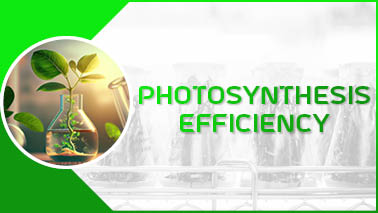
It refers to how effectively plants convert light energy into chemical energy through the process of photosynthesis. This efficiency is a crucial factor in determining the growth rate and biomass production of plants, which in turn impacts agriculture, bioenergy production, and the global carbon cycle. Photosynthesis involves the absorption of light by chlorophyll and other pigments, the conversion of light energy into chemical energy, and the synthesis of organic compounds from carbon dioxide and water.
Components of Photosynthesis Efficiency :
• Light Absorption Efficiency
• Quantum Efficiency
• Carbon Fixation Efficiency
• Energy Conversion Efficiency
Factors Affecting Photosynthesis Efficiency:
• Light Intensity
• CO2 Concentration
• Temperature
• Water Availability
• Leaf Anatomy
• Chlorophyll Content
• Adaptations
Photosynthesis efficiency is a complex trait influenced by multiple factors including light absorption, quantum yield, and carbon fixation. Enhancing this efficiency has significant implications for increasing crop yields, improving food security, and producing sustainable biofuels. Ongoing research in plant physiology, genetics, and biotechnology continues to seek ways to optimize photosynthesis for agricultural and environmental benefits.
Tags
Plant Science Conferences 2025
Plant Biology Conferences 2025
Plant Science Conferences 2025 China
Plant Molecular Biology Conferences 2025 Europe
Plant Molecular Biology Conferences
Plant Biology Conferences 2025 USA
Plant Biology Meetings
Plant Science Conferences 2025 Canada
Plant Biology Conferences
Plant Biotechnology Conferences
Plant Science Conferences 2024
Plant Science Conferences 2025 Europe
Plant Biology Conferences 2025 China
Plant Science Conferences 2025 USA
Plant Synthetic Biology Conferences
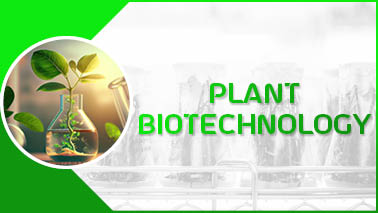
Plant biotechnology is a multidisciplinary field that utilizes biological techniques and principles to manipulate plants for various purposes, including agriculture, medicine, and environmental conservation. It involves the application of genetics, molecular biology, biochemistry, and other scientific disciplines to understand and modify plant traits for specific goals.
key aspects of plant biotechnology:
Genetic Engineering: Genetic engineering, also known as genetic modification (GM) or genetic manipulation, involves the manipulation of an organism's genetic material to introduce desired traits or characteristics. In plant biotechnology, genetic engineering techniques are used to introduce genes from other organisms (transgenes) into plants to confer traits such as pest resistance, herbicide tolerance, disease resistance, drought tolerance, and improved nutritional content.
Crop Improvement: Plant biotechnology plays a crucial role in crop improvement efforts aimed at enhancing yield, quality, and resilience to biotic and abiotic stresses. Through genetic engineering and marker-assisted selection (MAS), researchers can develop crops with desirable traits such as increased yield, improved nutritional content, enhanced shelf life, and resistance to pests, diseases, and environmental stresses like drought, salinity, and extreme temperatures.
Biopharming: Biopharming, or molecular farming, involves the use of plants as bioreactors to produce pharmaceuticals, vaccines, and other high-value bioproducts. Transgenic plants can be engineered to express therapeutic proteins, antibodies, vaccines, and other pharmaceuticals, offering a cost-effective and scalable alternative to traditional production methods.
Plant Molecular Biology: Plant biotechnology relies heavily on molecular biology techniques to study plant genetics, gene expression, signal transduction pathways, and metabolic pathways. Understanding the molecular mechanisms underlying plant growth, development, and stress responses is essential for developing biotechnological solutions to improve crop productivity and sustainability.
Genomic and Proteomic Approaches: Advances in genomics and proteomics have revolutionized plant biotechnology by providing insights into the structure, function, and regulation of plant genomes and proteomes. High-throughput sequencing technologies, bioinformatics tools, and functional genomics approaches facilitate the identification and characterization of genes, regulatory elements, and metabolic pathways involved in plant growth, development, and stress responses.
Bioinformatics and Computational Biology: Bioinformatics and computational biology play an increasingly important role in plant biotechnology by enabling the analysis, integration, and interpretation of large-scale omics data sets, including genomics, transcriptomics, proteomics, and metabolomics data. Computational tools and algorithms are used to predict gene function, identify regulatory networks, and optimize genetic engineering strategies for crop improvement and bioproduction.
Plant biotechnology holds immense potential for addressing global challenges such as food security, agricultural sustainability, human health, and environmental conservation. By harnessing the power of biotechnology, researchers and scientists can develop innovative solutions to improve crop productivity, enhance nutritional quality, reduce environmental impacts, and contribute to the development of a more sustainable and resilient agricultural system. However, it is essential to consider the ethical, social, and regulatory aspects of plant biotechnology to ensure its responsible and safe deployment for the benefit of society.
Tags
Plant Synthetic Biology Conferences
Plant Science Conferences 2024
Plant Science Conferences
Plant Biotechnology Conferences 2025 Aisa
Plant Science Conferences 2025
Plant Biology Conferences 2025 Europe
Plant Biology Conferences 2025 China
Plant Biology Conferences 2025 USA
Plant Genomics Conferences
Plant Science Conferences 2025 Asia
Plant Molecular Biology Conferences
Plant Biotechnology Conferences
Plant Science Conferences 2025 Europe
Plant Genetics Conferences 2025 USA
Plant Science Conferences 2025 China
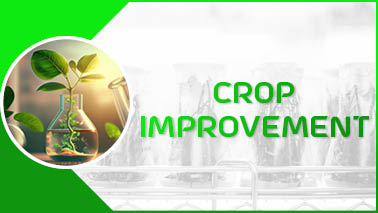
Crop improvement is the process of enhancing the quality, yield, resilience, and other desirable traits of crops through various breeding and biotechnological techniques. It is a fundamental aspect of agriculture aimed at meeting the increasing global demand for food, feed, fiber, and bioenergy while addressing challenges such as climate change, pest and disease pressure, soil degradation, and limited resources.
Key approaches to crop improvement:
Conventional Breeding: Conventional breeding involves the controlled crossing of plants with desirable traits to produce offspring with improved characteristics. Plant breeders select parent plants based on traits such as yield potential, disease resistance, stress tolerance, nutritional content, and agronomic performance. Through successive generations of breeding and selection, new crop varieties with improved traits are developed.
Hybridization: Hybridization is a breeding technique that involves crossing two genetically distinct parent plants to produce offspring with hybrid vigor or heterosis. Hybrid varieties often exhibit superior traits such as increased yield, uniformity, and disease resistance compared to their parental lines. Hybrid seeds are widely used in commercial agriculture for crops like maize, rice, sorghum, and vegetables.
Marker-Assisted Selection (MAS): Marker-assisted selection is a breeding technique that uses molecular markers linked to specific genes or traits of interest to accelerate the breeding process. DNA markers associated with traits such as disease resistance, drought tolerance, and nutritional content are identified and used to screen and select plants with desired traits in early breeding stages, enabling more efficient and precise crop improvement.
Genetic Engineering: Genetic engineering, or genetic modification (GM), involves the introduction of specific genes or DNA sequences into the genome of a crop plant to confer desired traits. Transgenic crops with traits such as insect resistance, herbicide tolerance, disease resistance, drought tolerance, and improved nutritional content have been developed using genetic engineering techniques. GM crops have contributed to increased agricultural productivity, reduced pesticide use, and improved farmer livelihoods in many parts of the world.
Genome Editing: Genome editing technologies such as CRISPR-Cas9 enable precise modifications to the DNA sequence of crop plants, offering new opportunities for crop improvement. Genome editing can be used to introduce beneficial mutations, knock out undesirable genes, or edit regulatory elements to enhance traits such as yield, quality, and stress tolerance. Genome-edited crops are being developed for traits such as disease resistance, herbicide tolerance, and nutritional fortification.
Omics Technologies: Omics technologies, including genomics, transcriptomics, proteomics, and metabolomics, provide comprehensive insights into the genetic, molecular, and biochemical basis of crop traits and responses to environmental stimuli. By integrating omics data with phenotypic information, researchers can identify candidate genes, pathways, and biomarkers associated with desirable traits, facilitating the development of improved crop varieties through targeted breeding and biotechnological approaches.
Crop improvement efforts are essential for ensuring global food security, reducing poverty, and promoting sustainable agriculture. By harnessing the power of breeding and biotechnology, researchers and breeders can develop crops that are more productive, resilient, nutritious, and environmentally sustainable, thereby contributing to the well-being of present and future generations. However, it is crucial to consider socio-economic, ethical, and regulatory aspects to ensure the responsible and equitable deployment of crop improvement technologies for the benefit of society.
Tags
Plant Biology Conferences 2025 USA
Plant Synthetic Biology Conferences
Plant Genetics Conferences
Plant Science Conferences 2025 USA
Plant Genetics Conferences 2025 USA
Plant Molecular Biology Conferences
Plant Biotechnology Conferences
Plant Science Conferences 2025 China
Plant Genomics Conferences
Plant Biology Conferences 2025 China
Plant Science Meetings
Plant Biology Conferences 2025 Japan
Plant Biotechnology Conferences 2025 Aisa
Plant Biology Conferences 2024
Plant Biology Conferences 2025 Asia
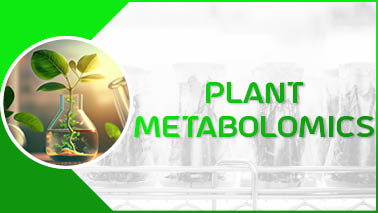
Plant metabolomics is a branch of science that focuses on the comprehensive study of small molecule metabolites present in plants. Metabolites are the end products of cellular processes, including primary metabolites involved in basic cellular functions like energy production and growth, as well as secondary metabolites that are often unique to specific plant species and play roles in defense, communication, and adaptation to environmental stresses.
Overview of plant metabolomics and its significance:
Overall, plant metabolomics is a powerful approach for studying plant metabolism, elucidating biochemical pathways, discovering bioactive compounds, and understanding plant-environment interactions. By unraveling the complexity of plant metabolomes, metabolomics contributes to advancements in agriculture, biotechnology, medicine, and environmental science, with implications for human health, food security, and ecosystem sustainability.
Tags
Plant Science Conferences 2024
Plant Biology Meetings
Plant Genetics Conferences 2025 USA
Plant Molecular Biology Conferences 2025 Europe
Plant Genetics Conferences
Plant Science Conferences 2025 USA
Plant Biology Conferences
Plant Biotechnology Conferences 2025 Aisa
Plant Biology Conferences 2025
Plant Pathology Conferences
Plant Science Conferences 2025 Canada
Plant Science Conferences 2025 China
Plant Biology Conferences 2025 Europe
Plant Science Conferences 2025 Europe
Plant Biology Conferences 2025 Japan
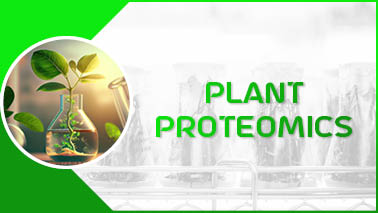
Plant proteomics is a field of science dedicated to the study of the entire complement of proteins (the proteome) in plants. Proteins are essential macromolecules that play diverse roles in plant growth, development, metabolism, and responses to environmental stimuli. Plant proteomics aims to elucidate the composition, structure, function, and regulation of proteins in various plant tissues, organs, and cell types under different physiological conditions.
An overview of plant proteomics and its significance:
Overall, plant proteomics is a powerful approach for studying plant biology, elucidating protein functions, and advancing crop improvement and agricultural biotechnology. By unraveling the complexity of the plant proteome, proteomics contributes to our understanding of plant physiology, stress responses, and adaptation mechanisms, with implications for crop productivity, food security, and environmental sustainability.
Tags
Plant Science Conferences 2025
Plant Genetics Conferences
Plant Synthetic Biology Conferences
Plant Science Conferences 2025 Europe
Plant Genomics Conferences
Plant Science Conferences 2025 Canada
Plant Science Conferences 2024
Plant Biology Conferences 2025 Australia
Plant Pathology Conferences
Plant Science Conferences 2025 USA
Plant Biology Conferences 2025 Asia
Plant Science Meetings
Agricultural Biotechnology Conferences
Plant Science Conferences
Plant Science Conferences 2025 China
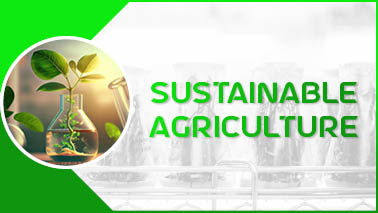
Sustainable agriculture is an approach to farming that aims to meet current food and fiber needs while preserving the environment, supporting rural communities, and ensuring the well-being of future generations. It encompasses practices and principles that promote long-term ecological balance, economic viability, and social equity in agricultural production systems. Sustainable agriculture seeks to minimize the environmental footprint of farming operations, enhance ecosystem resilience, and promote the health and welfare of farmers, consumers, and communities.
Key aspects of sustainable agriculture:
Sustainable agriculture prioritizes soil health as the foundation of agricultural productivity and ecosystem resilience. Practices such as crop rotation, cover cropping, reduced tillage, organic amendments, and agroforestry help build soil organic matter, improve soil structure, enhance nutrient cycling, and mitigate soil erosion, degradation, and nutrient loss. Healthy soils support diverse microbial communities, beneficial organisms, and plant-root interactions, contributing to increased crop yields, nutrient uptake, and water retention.
Sustainable agriculture promotes biodiversity conservation by preserving and enhancing the diversity of plant and animal species within agricultural landscapes. Biodiversity-rich agroecosystems provide ecological services such as pollination, pest control, soil fertility, and genetic resources for crop improvement. Agroecological practices such as diversified cropping systems, agroforestry, integrated pest management (IPM), and habitat restoration help maintain biodiversity, ecological balance, and ecosystem resilience in agricultural landscapes.
Sustainable agriculture emphasizes efficient water management practices to conserve water resources, minimize water pollution, and enhance water quality in agricultural systems. Techniques such as drip irrigation, rainwater harvesting, soil moisture monitoring, and water-efficient crops help optimize water use efficiency, reduce water waste, and mitigate the impacts of drought and water scarcity on crop production. Sustainable water management practices also protect aquatic ecosystems, wetlands, and water bodies from contamination by agricultural runoff and agrochemicals.
Sustainable agriculture promotes the use of agroecological pest management practices to control pests, diseases, and weeds while minimizing reliance on synthetic pesticides and herbicides. Integrated pest management (IPM) strategies integrate multiple approaches such as crop rotation, biological control, habitat manipulation, resistant crop varieties, and cultural practices to suppress pest populations, reduce pest damage, and promote natural pest control mechanisms. IPM helps minimize environmental impacts, pesticide residues, and risks to human health while maintaining crop productivity and profitability.
Sustainable agriculture addresses the challenges of climate change by promoting climate-resilient farming practices and adaptive strategies. Climate-smart agricultural practices such as conservation agriculture, agroforestry, drought-resistant crop varieties, soil carbon sequestration, and renewable energy integration help mitigate greenhouse gas emissions, enhance carbon sequestration, and build resilience to extreme weather events, such as droughts, floods, and heatwaves. Sustainable agriculture contributes to climate change mitigation and adaptation efforts while ensuring food security and livelihoods for farmers.
Sustainable agriculture fosters social equity and economic viability by supporting fair labor practices, equitable access to land and resources, and vibrant rural communities. It promotes diversified farming systems, value-added enterprises, direct marketing channels, and cooperative partnerships to enhance farmer livelihoods, rural employment, and local economic development. Sustainable agriculture also prioritizes food security, nutrition, and social justice by promoting equitable access to healthy, affordable, and culturally appropriate food for all members of society.
Overall, sustainable agriculture offers a holistic and integrated approach to agricultural development that balances ecological, economic, and social dimensions of sustainability. By promoting regenerative farming practices, biodiversity conservation, climate resilience, and social equity, sustainable agriculture contributes to the long-term health and resilience of agroecosystems, rural communities, and the planet.
Tags
Plant Genetics Conferences 2025 USA
Plant Science Conferences
Plant Science Conferences 2025 Europe
Plant Genetics Conferences
Plant Pathology Conferences
Plant Science Conferences 2025 Canada
Plant Science Conferences 2025 China
Plant Biology Conferences 2025
Plant Biology Conferences 2025 China
Plant Biology Conferences
Plant Molecular Biology Conferences 2025 Europe
Plant Molecular Biology Conferences
Plant Biotechnology Conferences 2025 Aisa
Plant Synthetic Biology Conferences
Plant Genomics Conferences
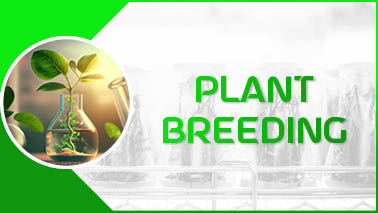
Plant breeding is the science-driven creative process used to develop new plant varieties with desirable traits. It involves the selection of plants with specific characteristics and breeding them to produce offspring that express those traits, improving the genetic makeup of future plant generations. The goals of plant breeding include enhancing crop yield, disease resistance, stress tolerance, nutritional quality, and adaptability to different environments.
Objectives of Plant Breeding :
Methods of Plant Breeding :
Selection:
Hybridization:
Backcross Breeding: Involves crossing a hybrid with one of its parents or a genetically similar individual to retain desired traits while incorporating new ones.
Mutation Breeding: Inducing mutations through chemical, physical, or biological agents to create genetic variations from which desirable mutants can be selected.
Polyploidy Breeding: Doubling or increasing the number of chromosome sets to create new plant varieties with superior traits.
Genetic Engineering and Biotechnology:
Steps in Plant Breeding :
Challenges in Plant Breeding :
Importance of Plant Breeding :
Plant breeding plays a critical role in agriculture by ensuring food security, improving nutritional quality, and enhancing environmental sustainability. It contributes to the development of crops that can meet the demands of a growing global population while adapting to changing climatic conditions and reducing the environmental impact of agricultural practices.
Tags
Plant Genomics Conferences
Plant Synthetic Biology Conferences
Plant Science Conferences 2025 China
Plant Science Conferences 2025 Canada
Plant Science Conferences 2025 USA
Plant Biology Conferences 2025 USA
Plant Biology Conferences 2025 China
Plant Science Meetings
Plant Biology Conferences 2025 Australia
Plant Biotechnology Conferences 2025 Aisa
Plant Science Conferences
Plant Biotechnology Conferences
Plant Genetics Conferences
Plant Biology Meetings
Plant Biology Conferences 2025 Japan

Plant cell signaling is a complex and vital process that allows plants to perceive and respond to their environment. This communication network involves various signals, receptors, and responses that enable plants to adapt to changes, defend against pathogens, and manage growth and development.
Key Components of Plant Cell Signaling :
Types of Plant Cell Signaling :
Plant cell signaling is a dynamic and intricate system essential for plant survival and adaptation. These signaling networks not only provides insights into plant biology but also has practical applications in agriculture, such as developing crops that are more resilient to stresses or have improved growth characteristics. Advances in molecular biology and genetics continue to uncover the complexities of plant signaling pathways, opening new avenues for enhancing plant health and productivity.
Tags
Plant Biology Conferences
Plant Biotechnology Conferences
Plant Genetics Conferences 2025 USA
Plant Synthetic Biology Conferences
Plant Biology Conferences 2025
Plant Biotechnology Conferences 2025 Aisa
Plant Science Meetings
Plant Science Conferences 2025 China
Plant Biology Meetings
Plant Science Conferences
Agricultural Biotechnology Conferences
Plant Biology Conferences 2025 Australia
Plant Science Conferences 2025 Canada
Plant Biology Conferences 2025 Europe
Plant Science Conferences 2024
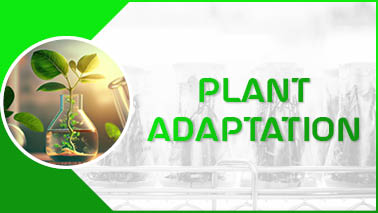
Plant adaptation refers to the various structural, physiological, and behavioral modifications that plants undergo to survive and thrive in diverse environmental conditions. These adaptations enable plants to cope with challenges such as extreme temperatures, water scarcity, varying light conditions, and interactions with other organisms. Understanding plant adaptations provides insights into the resilience and versatility of plant life across different habitats.
Types of Plant Adaptations :
Morphological Adaptations:
Physiological Adaptations:
Behavioral Adaptations:
Adaptations to Specific Environments :
Desert Environments:
Aquatic Environments:
Tropical Rainforests:
Temperate Climates:
Evolution and Adaptation :
Plant adaptations result from evolutionary processes where natural selection favors traits that enhance survival and reproduction in specific environments. Genetic mutations and recombination introduce variability, and advantageous traits become more common in the population over generations.
Plant adaptation is a testament to the incredible resilience and diversity of plant life. Through structural, physiological, and behavioral modifications, plants have conquered nearly every corner of the Earth, from scorching deserts to icy tundras, deep forests to open oceans. Understanding these adaptations not only highlights the ingenuity of nature but also provides valuable knowledge for agriculture, conservation, and combating climate change. By studying plant adaptations, we can develop strategies to cultivate crops in challenging environments, preserve biodiversity, and ensure ecosystem stability in the face of global changes.
Tags
Plant Biology Conferences 2025 China
Plant Biology Conferences 2025 USA
Plant Science Conferences 2025 USA
Plant Science Conferences
Plant Science Conferences 2025 Asia
Plant Science Meetings
Plant Pathology Conferences
Plant Science Conferences 2025 Canada
Plant Biology Conferences 2025 Japan
Agricultural Biotechnology Conferences
Plant Biology Conferences 2025 Asia
Plant Science Conferences 2025
Plant Science Conferences 2024
Plant Biology Meetings
Plant Genetics Conferences
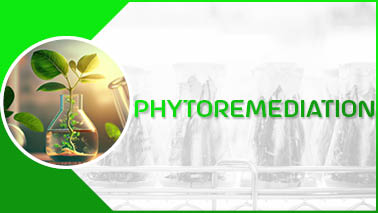
Phytoremediation is an environmentally friendly, cost-effective technology that uses plants to remediate or clean up contaminated environments, such as soil, water, and air. This green technology leverages the natural processes of plants to degrade, extract, or immobilize pollutants, including heavy metals, organic compounds, and radioactive elements.
Key Mechanisms of Phytoremediation :
Applications of Phytoremediation :
Advantages of Phytoremediation :
Phytoremediation is a promising green technology that leverages the natural abilities of plants to clean up contaminated environments. Its application ranges from heavy metal and organic pollutant removal to nutrient management and even radioactive decontamination. While it has certain limitations, its advantages make it a valuable tool in the field of environmental remediation. Ongoing research and technological advancements continue to enhance its efficiency and broaden its applicability, contributing to more sustainable and eco-friendly remediation practices.
Tags
Plant Biology Conferences 2025 USA
Plant Genetics Conferences
Plant Science Conferences 2024
Plant Pathology Conferences
Plant Molecular Biology Conferences 2025 Europe
Plant Genetics Conferences 2025 USA
Plant Biology Conferences 2025
Plant Biology Conferences 2025 Japan
Agricultural Biotechnology Conferences
Plant Science Conferences
Plant Biology Conferences 2024
Plant Science Conferences 2025 Asia
Plant Biology Conferences 2025 Australia
Plant Biotechnology Conferences 2025 Aisa
Plant Science Conferences 2025 USA
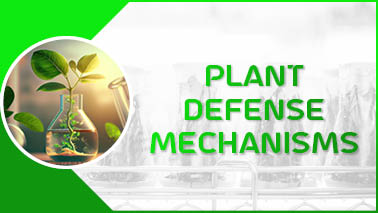
Plant defense mechanisms are sophisticated strategies developed by plants to protect themselves from herbivores, pathogens, and environmental stressors. These defenses can be broadly categorized into structural (physical) defenses, chemical defenses, and biological defenses. Understanding these mechanisms is crucial for agriculture, ecology, and even medicine, as they illustrate the intricate ways plants survive and thrive despite various threats.
Structural Defenses :
Chemical Defenses :
Secondary Metabolites: Plants produce a variety of chemical compounds that deter herbivores and pathogens.
Phytoalexins: These are antimicrobial compounds synthesized in response to pathogen attack. For example, resveratrol, produced by grapevines, has antifungal properties.
Protease Inhibitors: These proteins inhibit the digestive enzymes of herbivores, making it difficult for them to digest plant material. Many legumes produce protease inhibitors as a defense mechanism.
Volatile Organic Compounds (VOCs): Plants release VOCs when under attack, which can attract natural predators of the herbivores or signal neighboring plants to activate their own defenses. For example, when corn plants are attacked by caterpillars, they release VOCs that attract parasitic wasps.
Biological Defenses :
Symbiotic Relationships: Some plants form mutualistic relationships with other organisms for defense.
Endophytes: These are microorganisms, such as bacteria or fungi, that live within plant tissues and provide protection against pathogens and herbivores. Endophytic fungi in grasses can produce alkaloids that deter herbivores.
Induced Defenses :
Plants can also activate defense mechanisms in response to specific threats, a phenomenon known as induced defense. This can involve both physical and chemical changes.
Plant defense mechanisms are essential for survival in a world full of herbivores and pathogens. Through a combination of structural barriers, chemical deterrents, and biological partnerships, plants can effectively protect themselves. These defenses are not static; they can be dynamic and responsive to the environment, showcasing the evolutionary arms race between plants and their attackers. Understanding these mechanisms not only sheds light on plant ecology and evolution but also has practical applications in agriculture, such as developing pest-resistant crops and sustainable pest management strategies.
Tags
Plant Science Conferences 2025 Canada
Plant Science Conferences
Plant Science Conferences 2025 Asia
Plant Genomics Conferences
Agricultural Biotechnology Conferences
Plant Molecular Biology Conferences
Plant Biology Conferences 2025
Plant Science Conferences 2024
Plant Biology Conferences
Plant Science Conferences 2025
Plant Biotechnology Conferences
Plant Biology Conferences 2025 USA
Plant Biology Conferences 2025 Asia
Plant Science Conferences 2025 USA
Plant Biology Conferences 2025 China
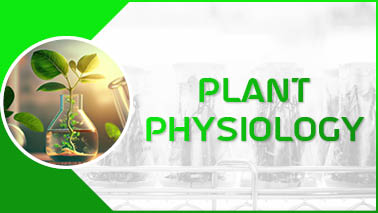
Plant physiology is the study of the vital processes and functions in plants, including how they grow, develop, and respond to their environment. This scientific field covers a range of topics, from cellular mechanisms to whole-plant processes, and is fundamental to understanding plant biology and improving agricultural practices.
Key Areas of Plant Physiology :
Photosynthesis:
Respiration:
Water and Nutrient Uptake:
Transport Systems:
Growth and Development:
Stress Physiology:
Cellular and Molecular Basis :
Cell Structure:
Signal Transduction:
Applications and Importance :
Plant physiology is a dynamic and essential field that bridges the gap between plant biology and practical applications in agriculture, biotechnology, and environmental management. By studying the various processes that govern plant life, scientists and researchers can develop innovative solutions to some of the most pressing challenges in food security, environmental sustainability, and climate resilience.
Tags
Plant Genetics Conferences 2025 USA
Plant Synthetic Biology Conferences
Agricultural Biotechnology Conferences
Plant Biotechnology Conferences
Plant Science Conferences 2025 China
Plant Science Conferences 2025 Canada
Plant Pathology Conferences
Plant Molecular Biology Conferences 2025 Europe
Plant Biology Conferences
Plant Molecular Biology Conferences
Plant Science Conferences 2025 USA
Plant Science Conferences 2025 Asia
Plant Biology Conferences 2025 Japan
Plant Genetics Conferences
Plant Science Conferences 2025 Europe
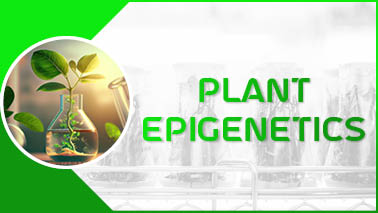
Plant epigenetics is the study of heritable changes in gene expression that do not involve alterations to the DNA sequence itself. These changes are mediated by mechanisms such as DNA methylation, histone modification, and RNA-associated silencing. Epigenetic modifications play crucial roles in regulating plant development, adaptation to environmental changes, and responses to biotic and abiotic stress.
Key Mechanisms of Plant Epigenetics :
Roles of Epigenetics in Plants :
Developmental Regulation:
Environmental Response:
Applications of Plant Epigenetics
Crop Improvement:
Breeding and Biotechnology:
Environmental Conservation:
Plant epigenetics provides a deeper understanding of the regulation of gene expression and the ability of plants to adapt to their environment. The study of epigenetic mechanisms reveals the complexity of plant responses to developmental cues and environmental stresses. Harnessing this knowledge holds significant potential for advancing agriculture, biotechnology, and environmental conservation, offering new ways to enhance plant resilience and productivity in a changing world.
Tags
Agricultural Biotechnology Conferences
Plant Molecular Biology Conferences
Plant Biology Conferences 2025 Europe
Plant Science Conferences 2025 Canada
Plant Biology Conferences 2025 Australia
Plant Genetics Conferences 2025 USA
Plant Biology Conferences 2025 USA
Plant Biology Conferences 2024
Plant Science Conferences 2025 Asia
Plant Science Conferences
Plant Biotechnology Conferences
Plant Synthetic Biology Conferences
Plant Molecular Biology Conferences 2025 Europe
Plant Science Conferences 2025 China
Plant Biology Conferences 2025 China
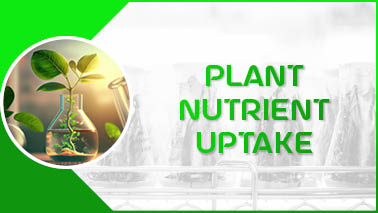
Plant nutrient uptake is a crucial process that involves the absorption of essential minerals and nutrients from the soil, enabling plants to grow, develop, and reproduce. These nutrients, classified into macronutrients and micronutrients, play vital roles in various physiological and biochemical processes within the plant.
Essential Nutrients for Plants :
Macronutrients: Required in large quantities.
Micronutrients: Required in smaller quantities.
Mechanisms of Nutrient Uptake :
Root Architecture and Growth:
Active Transport:
Passive Transport:
Ion Exchange:
Factors Affecting Nutrient Uptake :
Soil Properties:
Environmental Conditions:
Biological Interactions:
Improving Nutrient Uptake in Agriculture :
plant nutrient uptake is fundamental to optimizing plant growth, enhancing crop yields, and promoting sustainable agricultural practices. By managing soil health, employing effective crop management strategies, and leveraging advances in plant breeding and biotechnology, it is possible to improve nutrient uptake and ensure the efficient use of resources in agriculture.
Tags
Plant Biology Conferences 2025 Australia
Plant Synthetic Biology Conferences
Plant Molecular Biology Conferences 2025 Europe
Plant Science Conferences 2025 Asia
Plant Biology Conferences 2025 China
Plant Genetics Conferences 2025 USA
Plant Molecular Biology Conferences
Plant Science Conferences 2025 USA
Plant Biotechnology Conferences 2025 Aisa
Agricultural Biotechnology Conferences
Plant Biology Conferences 2025 USA
Plant Science Conferences 2025 Canada
Plant Science Conferences 2024
Plant Biotechnology Conferences
Plant Science Conferences 2025 Europe
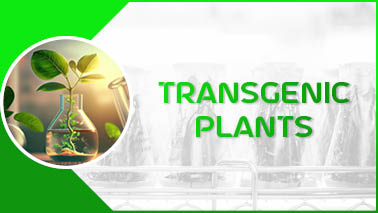
Transgenic plants, also known as genetically modified (GM) plants, are plants that have been genetically engineered to contain one or more genes from another species. These genes are introduced using recombinant DNA technology, allowing the plants to exhibit new traits that are not found in their natural counterparts. This technology has revolutionized agriculture, medicine, and industry by enhancing crop productivity, resistance to pests and diseases, tolerance to environmental stresses, and nutritional value.
Development of Transgenic Plants :
Gene Identification and Cloning:
Gene Insertion:
Regeneration and Selection:
Screening and Testing:
Applications of Transgenic Plants :
Agricultural Improvements:
Nutritional Enhancements:
Industrial and Pharmaceutical Uses:
Benefits of Transgenic Plants :
Transgenic plants represent a significant advancement in agricultural biotechnology, offering solutions to some of the most pressing challenges in food production and sustainability. While they provide numerous benefits, careful consideration of their environmental, health, and socio-economic impacts is essential. Continued research, robust regulatory frameworks, and informed public discourse are key to realizing the potential of transgenic plants while addressing the associated challenges and concerns.
Tags
Plant Biotechnology Conferences
Plant Molecular Biology Conferences 2025 Europe
Plant Pathology Conferences
Plant Science Conferences 2025 China
Plant Science Conferences 2025 USA
Plant Biology Meetings
Plant Science Conferences 2025
Plant Biology Conferences 2025 China
Plant Biology Conferences 2025
Plant Molecular Biology Conferences
Plant Biology Conferences 2025 USA
Plant Genomics Conferences
Plant Biology Conferences 2024
Plant Synthetic Biology Conferences
Plant Biology Conferences 2025 Australia
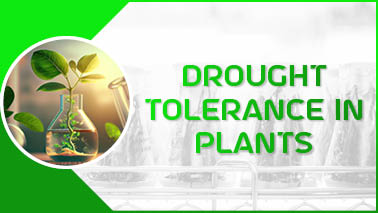
Drought tolerance in plants refers to their ability to withstand periods of water scarcity without suffering significant damage or reduction in productivity. This trait is crucial for plant survival and agricultural productivity, especially in regions prone to irregular rainfall and water shortages. Drought tolerance involves a complex interplay of physiological, biochemical, and molecular mechanisms that enable plants to conserve water, maintain cellular functions, and survive extended dry periods.
Mechanisms of Drought Tolerance :
Morphological Adaptations:
Physiological Mechanisms:
Biochemical Responses:
Molecular and Genetic Mechanisms:
Breeding and Biotechnology for Drought Tolerance :
Management Practices to Enhance Drought Tolerance :
Soil Management:
Irrigation Management:
Crop Management:
Examples of Drought-Tolerant Crops
Drought tolerance is a vital trait for plant survival and agricultural productivity in water-scarce environments. Understanding and enhancing this trait through a combination of traditional breeding, modern biotechnology, and effective management practices is essential for ensuring food security and sustainable agriculture in the face of increasing climate variability and water scarcity.
Tags
Plant Biology Conferences 2025 USA
Plant Biology Conferences
Plant Science Conferences 2025 Canada
Agricultural Biotechnology Conferences
Plant Genetics Conferences
Plant Biology Conferences 2025 China
Plant Synthetic Biology Conferences
Plant Science Conferences 2025 Asia
Plant Genomics Conferences
Plant Biology Conferences 2024
Plant Molecular Biology Conferences 2025 Europe
Plant Science Conferences
Plant Science Conferences 2024
Plant Biotechnology Conferences
Plant Biology Conferences 2025
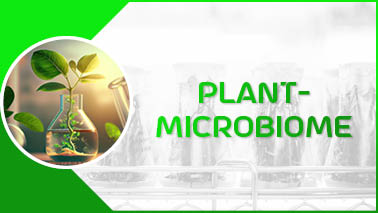
The plant microbiome refers to the diverse community of microorganisms associated with plants, including bacteria, fungi, archaea, and viruses, inhabiting various plant tissues such as roots, stems, leaves, and flowers. This intricate ecosystem plays a fundamental role in plant health, growth, and adaptation to environmental challenges. The interaction between plants and their microbiomes is dynamic and multifaceted, influencing nutrient acquisition, defense against pathogens, tolerance to abiotic stresses, and overall ecosystem functioning.
Components of the Plant Microbiome :
Rhizosphere Microbiome:
Endophytic Microbiome:
Phyllosphere Microbiome:
Functions of the Plant Microbiome :
Applications of Plant-Microbiome Interactions :
Biofertilizers and Biostimulants:
Biological Control Agents:
Microbial Biofortification:
Phytoremediation:
The plant microbiome represents a dynamic and intricate network of interactions between plants and microorganisms with profound implications for plant health, agricultural sustainability, and ecosystem functioning. Unlocking the full potential of plant-microbe interactions through interdisciplinary research and innovative applications holds promise for addressing global challenges in food security, environmental conservation.
Tags
Plant Science Conferences 2025
Plant Biology Conferences 2025 China
Plant Biology Conferences 2025
Plant Biology Conferences 2025 Japan
Plant Synthetic Biology Conferences
Plant Biotechnology Conferences 2025 Aisa
Plant Science Conferences 2024
Plant Biology Conferences 2024
Plant Genetics Conferences
Plant Biology Meetings
Plant Biology Conferences
Plant Biotechnology Conferences
Plant Genetics Conferences 2025 USA
Plant Genomics Conferences
Plant Molecular Biology Conferences
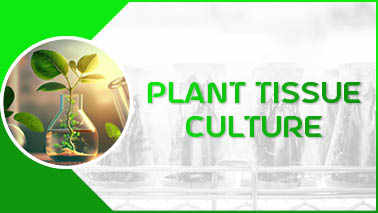
Plant tissue culture, also known as micropropagation or in vitro culture, is a technique used to propagate and manipulate plants at the cellular level under sterile laboratory conditions. It involves the growth of plant cells, tissues, or organs in an artificial nutrient medium supplemented with hormones and nutrients. Plant tissue culture has various applications in agriculture, horticulture, forestry, conservation, and biotechnology.
Techniques and Processes :
Explants Selection:
Surface Sterilization:
Culture Initiation:
Callus Formation:
Shoot and Root Induction:
Acclimatization:
Advantages of Plant Tissue Culture :
Rapid Clonal Propagation:
Year-Round Propagation:
Disease-Free Plantlets:
Genetic Manipulation:
Plant tissue culture is a powerful tool for the propagation, manipulation, and genetic improvement of plants, offering numerous applications in agriculture, horticulture, forestry, and biotechnology. Despite its challenges, tissue culture continues to revolutionize plant breeding, conservation, and bioproduction, contributing to the advancement of crop productivity, genetic diversity conservation, and the development of novel plant-based products. Continued research and technological advancements in tissue culture techniques hold promise for addressing global challenges in food security, biodiversity conservation, and sustainable agriculture.
Tags
Plant Science Conferences 2025 USA
Plant Biotechnology Conferences
Agricultural Biotechnology Conferences
Plant Biology Conferences 2025 China
Plant Biology Conferences 2024
Plant Molecular Biology Conferences 2025 Europe
Plant Science Meetings
Plant Synthetic Biology Conferences
Plant Pathology Conferences
Plant Biology Meetings
Plant Science Conferences 2025 Europe
Plant Science Conferences 2025 China
Plant Genetics Conferences 2025 USA
Plant Molecular Biology Conferences
Plant Biology Conferences 2025 Japan
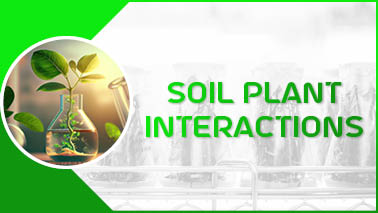
Soil-plant interactions encompass the complex and dynamic relationships between soil properties, plant growth, and ecosystem functioning. These interactions play a fundamental role in shaping plant distribution, productivity, and community composition, as well as influencing soil structure, nutrient cycling, and microbial activity. Understanding the intricate interplay between soil and plants is essential for sustainable land management, agricultural production, and ecosystem conservation.
Soil Factors Influencing Plant Growth :
Soil Texture:
Soil pH:
Soil Moisture:
Soil Nutrients:
Plant Responses to Soil Conditions :
Root Morphology:
Nutrient Uptake:
Water Use Efficiency:
Management Implications and Strategies :
Soil Conservation Practices:
Nutrient Management:
Soil-plant interactions are fundamental to ecosystem dynamics, agricultural productivity, and environmental sustainability. The reciprocal relationships between soil properties, plant growth, and ecosystem processes highlight the importance of integrated soil and land management approaches that prioritize soil health, biodiversity conservation, and ecosystem resilience. By understanding and harnessing the complex interactions between soil and plants, we can develop strategies for sustainable land use, food security, and ecosystem restoration in a changing world.
Tags
Plant Biotechnology Conferences 2025 Aisa
Plant Biology Conferences 2025
Plant Synthetic Biology Conferences
Plant Biology Conferences 2025 Asia
Plant Science Conferences 2025
Plant Science Meetings
Plant Science Conferences 2025 Canada
Plant Molecular Biology Conferences 2025 Europe
Plant Biology Conferences 2025 Japan
Plant Biology Conferences 2025 China
Agricultural Biotechnology Conferences
Plant Genetics Conferences
Plant Biotechnology Conferences
Plant Science Conferences 2025 USA
Plant Biology Conferences 2025 USA
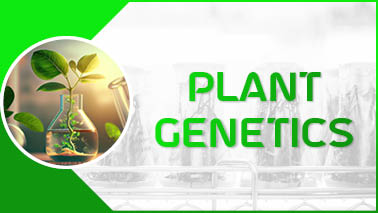
Plant genetics is the study of heredity, variation, and inheritance in plants, encompassing the molecular, cellular, and organismal levels of genetic organization. It investigates how genes control various traits and characteristics in plants, including morphology, physiology, development, and metabolism. By unraveling the genetic basis of plant traits, researchers aim to improve crop yields, enhance resistance to pests and diseases, and develop plants with novel traits beneficial for agriculture, horticulture, and environmental conservation.
Key Concepts in Plant Genetics :
Genetic Variation:
Mendelian Genetics:
Quantitative Genetics:
Molecular Genetics:
Applications of Plant Genetics :
Crop Improvement:
Biotechnology and Genetic Engineering:
Genetic Conservation and Diversity:
Phylogenetics and Evolutionary Genetics:
Plant genetics plays a pivotal role in understanding the genetic basis of plant traits, improving crop productivity, and addressing global challenges in agriculture, food security, and environmental sustainability. By harnessing the power of genetics, researchers and breeders can develop resilient, high-yielding crop varieties adapted to diverse growing conditions, contributing to the resilience and sustainability of agricultural systems in a rapidly changing world. Ongoing research efforts in plant genetics hold promise for unlocking the full potential of genetic diversity and molecular breeding tools to meet the demands of a growing population and a changing climate.
Tags
Plant Biology Conferences 2025 Asia
Plant Biology Conferences 2025 Australia
Plant Biology Conferences 2025 USA
Plant Biotechnology Conferences
Plant Molecular Biology Conferences 2025 Europe
Plant Science Conferences 2024
Plant Science Conferences 2025 Canada
Plant Biology Conferences 2025 Japan
Plant Genetics Conferences
Plant Biology Conferences 2024
Plant Genetics Conferences 2025 USA
Plant Science Conferences 2025 USA
Plant Synthetic Biology Conferences
Plant Science Conferences 2025 China
Plant Science Conferences 2025 Asia
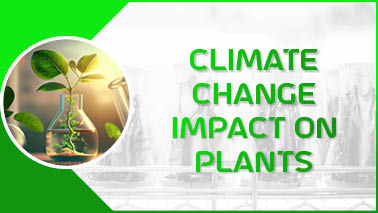
Climate change has a profound and multifaceted impact on plant life across the globe. These impacts are observed in various aspects such as changes in phenology, distribution, physiology, and ecosystem dynamics.
Phenological Changes :
Phenology refers to the timing of biological events in plants, such as flowering, leaf-out, and fruiting. Climate change, primarily through increased temperatures and altered precipitation patterns, is causing shifts in these phenological events.
Geographic Distribution :
The geographic ranges of many plant species are shifting in response to changing climatic conditions.
Physiological Stress :
Climate change imposes various physiological stresses on plants, impacting their growth, development, and survival.
Ecosystem Dynamics :
Climate change influences not just individual plants but entire ecosystems, leading to changes in community composition and ecosystem function.
Agricultural Impacts :
Climate change poses significant challenges to agriculture, affecting crop yields and food security.
The impact of climate change on plants is complex and multifaceted, involving changes in phenology, distribution, physiology, and ecosystem dynamics. These changes not only affect plant health and productivity but also have broader implications for ecosystems and human societies.
Tags
Plant Science Conferences 2025 Europe
Plant Biology Conferences 2025 Europe
Plant Science Conferences 2025 China
Plant Biology Conferences
Agricultural Biotechnology Conferences
Plant Science Conferences 2025 Canada
Plant Science Conferences 2025 USA
Plant Biology Conferences 2025 Asia
Plant Molecular Biology Conferences 2025 Europe
Plant Biology Conferences 2025
Plant Biology Conferences 2024
Plant Science Conferences 2025 Asia
Plant Science Conferences
Plant Science Conferences 2024
Plant Biology Conferences 2025 Japan
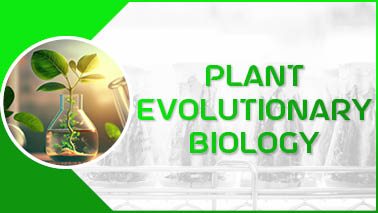
Plant evolutionary biology is the study of how plants have evolved and diversified over time through genetic changes, natural selection, and ecological interactions. This field encompasses the origin of plant species, the development of new traits, and the ways in which plants adapt to their environments.
key aspects of plant evolutionary biology:
Origins and Early Evolution :
Major Evolutionary Innovations :
Adaptive Radiation and Speciation :
Coevolution and Ecological Interactions :
Plant evolutionary biology is a dynamic and expansive field that explores how plants have adapted and diversified over millions of years. From the earliest land plants to the vast array of flowering plants today, the study of plant evolution reveals the intricate mechanisms driving the diversity of life on Earth.
Tags
Plant Biology Conferences 2025 Europe
Plant Science Conferences 2025 Asia
Agricultural Biotechnology Conferences
Plant Molecular Biology Conferences 2025 Europe
Plant Biology Conferences 2025 Japan
Plant Biology Conferences 2025 China
Plant Synthetic Biology Conferences
Plant Biotechnology Conferences 2025 Aisa
Plant Science Conferences 2025
Plant Science Meetings
Plant Science Conferences 2025 China
Plant Science Conferences
Plant Science Conferences 2024
Plant Genetics Conferences
Plant Biology Conferences 2025 Australia
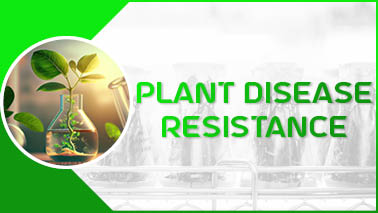
Plant disease resistance refers to the ability of plants to prevent or mitigate the damage caused by pathogens such as fungi, bacteria, viruses, and nematodes. This resistance can be genetic or induced, and it is a critical aspect of agricultural productivity and sustainability.
Types of Plant Disease Resistance :
Genetic Resistance :
Induced Resistance :
Mechanisms of Disease Resistance :
Physical Barriers :
Chemical Defenses :
Molecular Recognition :
Strategies for Enhancing Disease Resistance
Breeding and Biotechnology:
Integrated Pest Management (IPM) :
Plant disease resistance is a dynamic and multifaceted field critical for ensuring global food security. By leveraging advances in genetics, biotechnology, and integrated pest management, scientists and farmers can develop sustainable strategies to protect crops from devastating diseases.
Tags
Plant Biology Conferences 2025 Australia
Plant Science Conferences 2025 Canada
Plant Biology Conferences 2025
Plant Science Conferences 2025 USA
Plant Biology Meetings
Plant Science Meetings
Plant Biology Conferences 2024
Plant Molecular Biology Conferences
Plant Biology Conferences
Agricultural Biotechnology Conferences
Plant Science Conferences 2024
Plant Science Conferences 2025 Europe
Plant Genomics Conferences
Plant Pathology Conferences
Plant Biology Conferences 2025 Asia
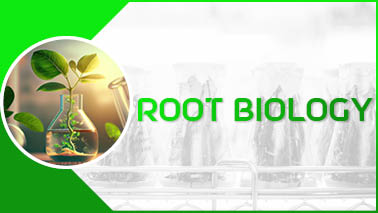
Root biology is a critical subfield of plant science that focuses on the study of roots, their structure, function, growth, and interactions with the environment. Roots play a fundamental role in plant health and development, anchoring the plant, absorbing water and nutrients, and interacting with soil microorganisms. Research in root biology is essential for advancing our knowledge of plant physiology, improving crop productivity, and addressing agricultural and environmental challenges.
Structure and Function of Roots :
Root Functions:
Root Growth and Development :
Interactions with Soil and Microorganisms :
Environmental and Agricultural Importance :
Soil Health: Healthy root systems contribute to soil structure and fertility. Roots help prevent soil erosion, improve water infiltration, and promote the formation of soil organic matter.
Crop Productivity: Understanding root biology is crucial for improving crop yields. Breeding programs often focus on developing root traits that enhance nutrient and water uptake efficiency, drought tolerance, and resistance to soil-borne diseases.
root biology is a vital field that underpins many aspects of plant science and agriculture. By deepening our understanding of root systems, researchers can contribute to sustainable food production, soil health, and environmental conservation. The ongoing advancements in root biology promise to address some of the most pressing challenges in agriculture and environmental management.
Tags
Plant Science Conferences 2024
Plant Biology Conferences 2025 Australia
Plant Molecular Biology Conferences 2025 Europe
Plant Science Conferences 2025 USA
Plant Science Conferences
Plant Biology Conferences 2025 USA
Plant Pathology Conferences
Plant Genetics Conferences
Plant Biotechnology Conferences
Plant Synthetic Biology Conferences
Plant Biotechnology Conferences 2025 Aisa
Plant Science Conferences 2025 Canada
Plant Biology Conferences 2025 Japan
Plant Biology Conferences 2024
Plant Science Conferences 2025 Europe
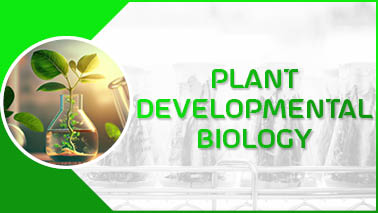
Plant developmental biology is a field that focuses on understanding the processes and mechanisms by which plants grow, develop, and differentiate from a single cell (zygote) into a mature organism. This discipline encompasses various stages of a plant's life cycle, including embryogenesis, seedling development, vegetative growth, flowering, and senescence.
Key Concepts in Plant Developmental Biology :
Hormonal Regulation :
Genetic and Molecular Basis :
Stages of Plant Development :
Embryogenesis :
Seed Development and Germination :
Vegetative Growth :
Reproductive Development :
Fruit and Seed Development :
Research and Applications :
Plant developmental biology is a vibrant and essential field that bridges fundamental biology and practical applications in agriculture and horticulture. Understanding the complex interplay of genetic, hormonal, and environmental factors that drive plant development enables the enhancement of crop performance and resilience, contributing to food security and sustainable agriculture.
Tags
Plant Science Conferences 2024
Plant Science Conferences 2025 Europe
Plant Biology Conferences 2025 USA
Plant Science Conferences 2025 China
Plant Synthetic Biology Conferences
Plant Biotechnology Conferences 2025 Aisa
Plant Biotechnology Conferences
Plant Science Conferences
Plant Biology Conferences 2025 China
Plant Genetics Conferences 2025 USA
Plant Science Conferences 2025 Asia
Plant Molecular Biology Conferences
Plant Science Meetings
Plant Science Conferences 2025
Plant Biology Conferences 2025 Asia
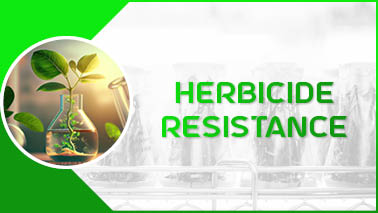
Herbicide resistance refers to the ability of a weed population to survive and reproduce despite the application of a herbicide that was previously effective at controlling it. This phenomenon poses significant challenges to agriculture, as it can lead to increased costs, reduced crop yields, and the need for more intensive management practices.
Mechanisms of Herbicide Resistance :
Target-Site Resistance :
Non-Target Site Resistance :
Evolution and Spread of Herbicide Resistance :
Examples of Herbicide-Resistant Weeds :
Management Strategies for Herbicide Resistance :
Integrated Weed Management (IWM) :
Herbicide Stewardship :
Genetic Approaches :
Herbicide resistance is a complex and evolving challenge that requires a multifaceted approach to manage effectively. By understanding the mechanisms of resistance, implementing integrated weed management practices, and leveraging biotechnological advancements, the agricultural community can work towards sustainable solutions that preserve the efficacy of herbicides and maintain crop productivity.
Tags
Plant Science Meetings
Plant Molecular Biology Conferences 2025 Europe
Plant Biology Conferences 2025 Japan
Plant Genetics Conferences 2025 USA
Plant Biology Conferences 2025 Asia
Agricultural Biotechnology Conferences
Plant Biology Conferences 2025 USA
Plant Science Conferences 2025 China
Plant Genetics Conferences
Plant Molecular Biology Conferences
Plant Science Conferences 2025
Plant Pathology Conferences
Plant Science Conferences
Plant Biology Meetings
Plant Biology Conferences 2025 China
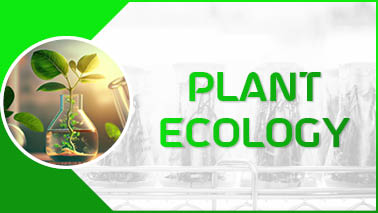
Plant ecology is the study of the interactions between plants and their environment, including both abiotic factors (such as climate, soil, and water) and biotic factors (such as herbivores, pathogens, and other plants). This field encompasses a wide range of topics, from individual plant responses to environmental stressors to the dynamics of plant communities and ecosystems.
Key Concepts in Plant Ecology :
Plant-Environment Interactions :
Adaptations to the Environment :
Population Ecology :
Community Ecology :
Ecosystem Ecology :
Applications of Plant Ecology :
Conservation Biology :
Agriculture :
Forestry :
Urban Ecology :
Plant ecology is a vital field that helps us understand the intricate relationships between plants and their environment. It provides essential knowledge for addressing global challenges such as biodiversity loss, climate change, and sustainable agriculture. By studying plant ecology, scientists can develop strategies to protect natural ecosystems, enhance agricultural productivity, and promote environmental sustainability.
Tags
Plant Genetics Conferences 2025 USA
Plant Molecular Biology Conferences 2025 Europe
Plant Genomics Conferences
Plant Science Conferences 2024
Agricultural Biotechnology Conferences
Plant Biology Conferences
Plant Genetics Conferences
Plant Science Conferences 2025 Canada
Plant Biology Conferences 2024
Plant Biology Conferences 2025
Plant Science Conferences
Plant Biology Conferences 2025 Europe
Plant Biology Conferences 2025 Japan
Plant Biotechnology Conferences
Plant Science Meetings
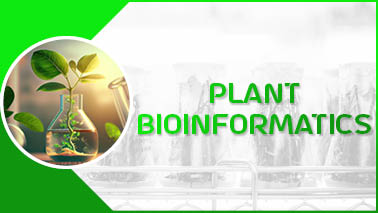
Plant bioinformatics is an interdisciplinary field that combines biology, computer science, and information technology to understand and interpret the vast amount of data generated by plant genomics, transcriptomics, proteomics, metabolomics, and phenomics. This field plays a crucial role in advancing plant science by enabling researchers to analyze and interpret complex biological data, ultimately leading to improvements in crop breeding, plant physiology, and biotechnology.
Key Areas of Plant Bioinformatics :
Applications of Plant Bioinformatics :
Challenges and Future Directions :
Despite its advancements, plant bioinformatics faces several challenges, including the need for more efficient algorithms to handle big data, integration of heterogeneous data types, and the development of user-friendly tools for non-experts. Future directions in plant bioinformatics may involve the use of artificial intelligence (AI) and machine learning (ML) to enhance data analysis and predictive modeling, as well as increased emphasis on open science and collaborative research to leverage global plant data resources.
plant bioinformatics is a rapidly evolving field that is essential for advancing our understanding of plant biology and improving agricultural practices. By integrating various types of biological data, bioinformatics tools and approaches enable researchers to uncover the genetic and molecular basis of plant traits, paving the way for innovations in crop production and sustainability.
Tags
Plant Biology Conferences 2025 Europe
Plant Biology Meetings
Plant Science Conferences 2025
Plant Biotechnology Conferences 2025 Aisa
Plant Genomics Conferences
Plant Molecular Biology Conferences 2025 Europe
Plant Biology Conferences 2025 USA
Plant Science Conferences 2024
Plant Genetics Conferences
Plant Science Meetings
Plant Biology Conferences 2025
Plant Science Conferences 2025 Asia
Plant Biology Conferences
Plant Science Conferences
Plant Science Conferences 2025 Europe
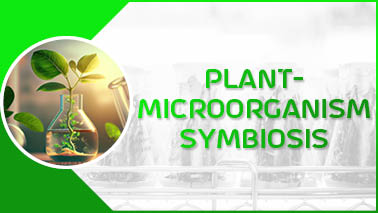
Plant-microorganism symbiosis refers to mutually beneficial interactions between plants and various microorganisms, including bacteria, fungi, and archaea. These symbiotic relationships are widespread in nature and play crucial roles in plant health, growth, and adaptation to diverse environmental conditions.
Types of Plant-Microorganism Symbiosis :
Mechanisms of Plant-Microorganism Interaction :
Ecological and Agricultural Implications :
plant-microorganism symbiosis represents a fascinating and dynamic aspect of biological interactions in nature. By unraveling the mechanisms and ecological significance of these symbiotic relationships, researchers can harness their potential to address pressing challenges in agriculture, environmental sustainability, and global food security.
Tags
Plant Biology Conferences 2025
Plant Science Conferences 2025
Plant Science Conferences 2025 USA
Plant Science Meetings
Plant Biology Conferences 2025 China
Plant Molecular Biology Conferences
Plant Science Conferences 2025 China
Agricultural Biotechnology Conferences
Plant Biology Conferences 2025 Australia
Plant Biology Meetings
Plant Genetics Conferences 2025 USA
Plant Science Conferences 2025 Europe
Plant Biology Conferences 2025 Asia
Plant Science Conferences 2025 Asia
Plant Science Conferences 2024
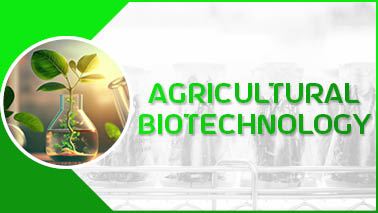
Agricultural biotechnology is a field of science that harnesses the power of biological processes, organisms, cells, and molecular techniques to improve agricultural productivity, enhance food security, and promote sustainable farming practices. This interdisciplinary domain merges aspects of biology, genetics, molecular biology, and biochemistry with traditional agricultural practices to develop innovative solutions for some of the most pressing challenges in agriculture today.
Key Areas of Agricultural Biotechnology :
Genetically Modified Organisms (GMOs):
Genetic Engineering: This involves the direct manipulation of an organism's genes using biotechnology. Crops are modified to express desirable traits such as pest resistance, herbicide tolerance, improved nutritional content, and enhanced growth rates.
Transgenic Crops: Plants that contain genes transferred from other species. For example, Bt cotton contains genes from the bacterium Bacillus thuringiensis, making it resistant to certain pests.
Tissue Culture and Micropropagation:
In Vitro Cultivation: Techniques like tissue culture allow for the propagation of plants in a controlled environment, leading to the rapid multiplication of disease-free planting materials.
Clonal Propagation: Producing genetically identical plants from a single parent plant, ensuring uniformity and quality.
Biofertilizers and Biopesticides:
Sustainable Agriculture: Leveraging beneficial microbes and natural compounds to enhance soil fertility and protect crops from pests and diseases, reducing the reliance on chemical inputs.
Integrated Pest Management (IPM): Combining biological, cultural, and chemical tools to manage pest populations in an environmentally and economically sustainable way.
Benefits of Agricultural Biotechnology :
Future Prospects :
The future of agricultural biotechnology promises further advancements in precision breeding, synthetic biology, and digital agriculture. Innovations such as vertical farming, lab-grown meat, and enhanced crop resilience to climate change are on the horizon. Collaborative efforts among scientists, policymakers, and farmers will be crucial in ensuring that these technologies are developed and deployed in a way that maximizes benefits while minimizing risks.
Agricultural biotechnology offers powerful tools to address the dual challenges of feeding a growing population and preserving the environment. By embracing scientific advancements while addressing ethical, environmental, and socio-economic concerns, we can pave the way for a sustainable and food-secure future.
Tags
Plant Biology Conferences 2025 China
Agricultural Biotechnology Conferences
Plant Science Conferences 2025
Plant Biology Conferences
Plant Molecular Biology Conferences 2025 Europe
Plant Biology Conferences 2025 Asia
Plant Science Conferences 2025 Canada
Plant Biology Meetings
Plant Genomics Conferences
Plant Science Conferences 2025 Asia
Plant Biology Conferences 2025 USA
Plant Molecular Biology Conferences
Plant Biology Conferences 2025 Europe
Plant Biology Conferences 2025
Plant Science Conferences 2025 USA
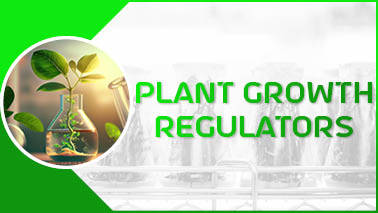
Plant growth regulators (PGRs), also known as plant hormones, are chemicals that significantly influence the growth and development of plants. These substances can be naturally occurring or synthetically produced and play crucial roles in regulating a wide range of physiological processes, including cell division, elongation, flowering, fruiting, and responses to environmental stimuli.
Types of Plant Growth Regulators :
Auxins:
Gibberellins (GAs):
Cytokinins:
Ethylene:
Abscisic Acid (ABA):
Functions and Mechanisms of Plant Growth Regulators :
Applications in Agriculture and Horticulture :
Plant growth regulators are powerful tools in modern agriculture and horticulture, offering diverse applications to enhance plant growth, productivity, and stress resilience. Their judicious use, guided by scientific understanding and regulatory frameworks, can significantly contribute to sustainable agricultural practices and food security.
Tags
Plant Science Conferences 2025 Europe
Plant Science Conferences
Plant Biology Conferences 2025 Asia
Plant Biology Conferences 2025 Australia
Plant Molecular Biology Conferences
Plant Science Conferences 2025
Plant Biology Conferences 2025 USA
Plant Biotechnology Conferences 2025 Aisa
Plant Biology Conferences 2025
Plant Molecular Biology Conferences 2025 Europe
Plant Science Conferences 2025 China
Plant Science Conferences 2025 Asia
Plant Genetics Conferences 2025 USA
Plant Synthetic Biology Conferences
Plant Biology Conferences 2025 Europe
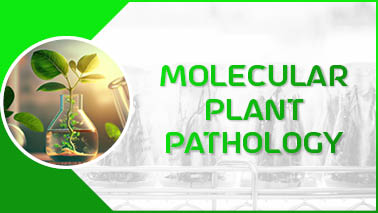
Molecular plant pathology is a field of study focused on understanding the interactions between plants and pathogens at the molecular level. It integrates various disciplines such as molecular biology, genetics, biochemistry, and genomics to study the complex mechanisms underlying plant disease resistance and susceptibility.
Key Concepts in Molecular Plant Pathology :
Plant-Pathogen Interactions:
Pathogen Virulence Factors:
Molecular Techniques in Plant Pathology:
Mechanisms of Plant Defense :
Applications and Advances :
Molecular plant pathology provides deep insights into the intricate battle between plants and their pathogens. By leveraging advanced molecular techniques and a comprehensive understanding of plant immune responses and pathogen strategies, researchers are developing innovative solutions to enhance food security, and promote sustainable agriculture.
Tags
Plant Pathology Conferences
Plant Biology Conferences 2025 Europe
Plant Science Conferences 2025
Plant Science Conferences 2025 Asia
Plant Genetics Conferences
Plant Science Meetings
Plant Biology Meetings
Plant Genomics Conferences
Plant Synthetic Biology Conferences
Plant Genetics Conferences 2025 USA
Plant Molecular Biology Conferences
Plant Science Conferences 2025 China
Plant Science Conferences 2024
Plant Science Conferences 2025 Europe
Plant Biotechnology Conferences
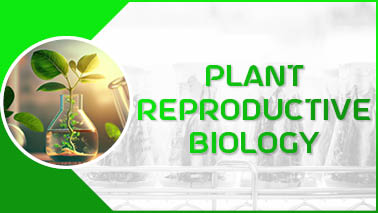
Plant reproductive biology is the study of the processes and mechanisms by which plants reproduce, ensuring the continuation of their species. This field encompasses the study of both sexual and asexual reproduction, focusing on the development, function, and interaction of reproductive organs, the genetic and environmental factors influencing reproduction, and the evolutionary implications of reproductive strategies.
Types of Plant Reproduction :
Sexual Reproduction:
Flower Structure: Flowers are the reproductive organs of angiosperms (flowering plants).
Pollination: The transfer of pollen from anthers to stigma, which can be mediated by wind, water, insects, birds, and other animals.
Fertilization: The fusion of male (sperm) and female (egg) gametes within the ovule, leading to the formation of a zygote.
Seed Development: Post-fertilization, the ovule develops into a seed, and the surrounding ovary often becomes a fruit.
Asexual Reproduction:
Applications in Agriculture and Horticulture :
Crop Breeding :
Clonal Propagation :
Genetic Engineering :
Plant reproductive biology provides essential insights into the mechanisms and strategies plants use to reproduce and survive. This knowledge not only advances our understanding of plant life cycles and evolution but also has practical applications in agriculture, horticulture, and conservation, contributing to sustainable food production and biodiversity preservation.
Tags
Plant Science Meetings
Plant Science Conferences 2025
Plant Biology Conferences 2025 Europe
Plant Pathology Conferences
Plant Biology Conferences 2025 Japan
Agricultural Biotechnology Conferences
Plant Science Conferences 2024
Plant Synthetic Biology Conferences
Plant Biology Conferences 2024
Plant Science Conferences
Plant Genetics Conferences
Plant Biology Meetings
Plant Molecular Biology Conferences
Plant Science Conferences 2025 Asia
Plant Science Conferences 2025 USA
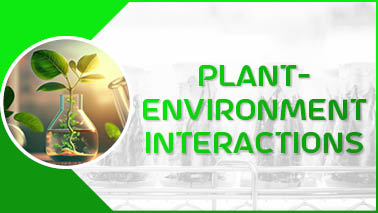
Plant-environment interactions encompass the various ways plants respond to and influence their surrounding environment. These interactions are complex and involve physiological, morphological, and biochemical adaptations that allow plants to survive, grow, and reproduce in diverse habitats.
Key Aspects of Plant-Environment Interactions :
Abiotic Factors:
Light:
Water:
Temperature:
Soil and Nutrients:
Biotic Factors:
Plant-Microbe Interactions:
Plant-Plant Interactions:
Applications and Implications :
Plant-environment interactions are fundamental to understanding how plants survive and thrive in various conditions. This knowledge is crucial for agriculture, conservation, and addressing global environmental challenges, highlighting the need for continued research and sustainable management practices.
Tags
Plant Science Conferences 2025 Canada
Plant Biology Conferences 2025 Japan
Plant Biology Conferences 2025 Asia
Plant Genomics Conferences
Plant Science Conferences 2025 USA
Plant Synthetic Biology Conferences
Plant Biology Conferences 2025
Plant Genetics Conferences
Plant Genetics Conferences 2025 USA
Agricultural Biotechnology Conferences
Plant Science Conferences 2025
Plant Biology Conferences 2025 Europe
Plant Biotechnology Conferences 2025 Aisa
Plant Science Conferences 2025 Asia
Plant Science Conferences 2024
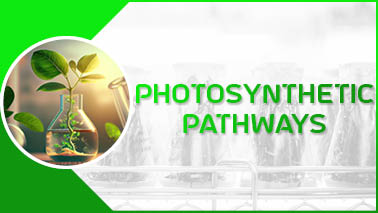
Photosynthesis is the process by which plants, algae, and some bacteria convert light energy into chemical energy, producing glucose and oxygen from carbon dioxide and water. This process is fundamental to life on Earth, as it is the primary source of organic matter for almost all organisms and the basis of the planet’s oxygen supply. There are three main photosynthetic pathways that plants use to fix carbon dioxide: C3, C4, and CAM (Crassulacean Acid Metabolism). Each pathway has distinct biochemical, physiological, and ecological adaptations that allow plants to thrive in different environments.
C3 Photosynthesis :
Biochemical Pathway:
C4 Photosynthesis :
Biochemical Pathway:
CAM (Crassulacean Acid Metabolism) Photosynthesis :
Biochemical Pathway:
Ecological and Agricultural Implications :
The diversity of photosynthetic pathways illustrates the evolutionary adaptations of plants to their environments. Understanding these pathways not only helps in comprehending plant ecology and evolution but also informs agricultural practices and strategies for improving crop resilience and productivity under varying environmental conditions.
Tags
Plant Biology Conferences 2025 USA
Plant Science Conferences 2025 Europe
Plant Biotechnology Conferences 2025 Aisa
Plant Molecular Biology Conferences
Plant Biology Conferences 2025 Australia
Plant Science Conferences
Plant Biology Conferences 2025 Asia
Plant Science Conferences 2025 Canada
Plant Biology Conferences
Plant Science Conferences 2025 USA
Plant Science Conferences 2025 Asia
Plant Biology Conferences 2025 Japan
Plant Biology Conferences 2025
Plant Science Conferences 2025
Plant Biology Conferences 2025 China
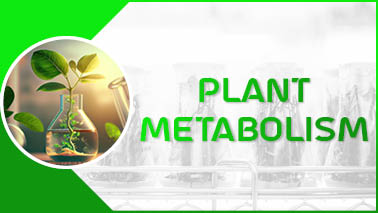
Plant metabolism encompasses all the biochemical processes that occur within plants to sustain life. These processes include the synthesis and breakdown of molecules, energy production and storage, and the regulation of various metabolic pathways. Plant metabolism is crucial for growth, development, reproduction, and adaptation to environmental stresses.
Primary Metabolism :
Primary metabolism involves essential processes that are necessary for the growth and maintenance of plant cells. These include photosynthesis, respiration, and the synthesis of essential biomolecules.
Photosynthesis:
Respiration:
Biosynthesis of Essential Molecules:
Secondary Metabolism :
Secondary metabolism involves the production of compounds that are not essential for basic cellular functions but play crucial roles in interactions with the environment, defense mechanisms, and adaptation.
Alkaloids:
Phenolics:
Terpenoids:
Environmental Influences on Plant Metabolism :
Applications of Plant Metabolism :
Agriculture:
Pharmaceuticals:
Biofuels:
Environmental Conservation:
Plant metabolism is a complex network of biochemical processes essential for plant life and their interactions with the environment. Advances in understanding plant metabolic pathways and their regulation have significant implications for agriculture, medicine, and environmental sustainability.
Tags
Plant Biology Conferences 2025 Australia
Plant Biotechnology Conferences 2025 Aisa
Plant Biology Conferences 2025 USA
Plant Biology Conferences 2025 China
Plant Genetics Conferences
Plant Science Conferences 2025 Europe
Plant Science Conferences 2025
Plant Science Conferences 2025 China
Plant Biology Conferences 2025 Japan
Plant Science Conferences 2025 Canada
Plant Genetics Conferences 2025 USA
Plant Molecular Biology Conferences 2025 Europe
Plant Science Conferences 2025 Asia
Plant Biology Conferences 2025
Plant Science Conferences
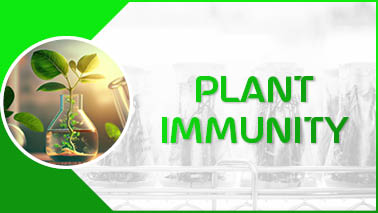
Plant immunity refers to the mechanisms and processes by which plants detect and respond to pathogens, pests, and other harmful agents. Unlike animals, plants lack specialized immune cells and instead rely on innate immune responses that occur at the cellular level. Plant immunity is crucial for survival, influencing plant health, productivity, and resilience in natural and agricultural ecosystems.
Key Components of Plant Immunity :
Physical and Chemical Barriers:
Innate Immune Responses:
Mechanisms of Plant Defense :
Physical Barriers and Structural Defenses:
Chemical Defenses:
Applications of Plant Immunity :
Plant immunity is a sophisticated and dynamic system that enables plants to defend themselves against a wide range of threats. Advances in our understanding of plant immune mechanisms offer promising avenues for improving crop protection, sustainability, and food security in the face of increasing global challenges.
Tags
Plant Biology Conferences 2025
Plant Science Conferences 2025 Canada
Plant Biology Conferences
Agricultural Biotechnology Conferences
Plant Biology Conferences 2025 China
Plant Science Conferences 2025 USA
Plant Science Meetings
Plant Science Conferences 2025
Plant Biology Conferences 2025 USA
Plant Biology Meetings
Plant Genetics Conferences
Plant Molecular Biology Conferences 2025 Europe
Plant Biology Conferences 2025 Japan
Plant Biology Conferences 2025 Australia
Plant Science Conferences 2025 Europe

Allelopathy refers to the biological phenomenon where one plant affects the growth, survival, and reproduction of other plants through the release of biochemicals known as allelochemicals. These allelochemicals can have beneficial, neutral, or detrimental effects on neighboring plants. Allelopathy plays a significant role in plant ecology, agriculture, and the management of natural and managed ecosystems.
Key Concepts in Allelopathy :
Allelochemicals :Chemical substances produced by plants that influence the growth and development of other plants.
Mechanisms of Action:
Ecological Roles:
Examples of Allelopathic Plants :
Applications of Allelopathy :
Allelopathy is a significant ecological phenomenon with profound implications for plant interactions, ecosystem dynamics, and agricultural practices. By harnessing the principles of allelopathy, we can develop sustainable strategies for weed management, crop production, and ecosystem restoration.
Tags
Plant Molecular Biology Conferences 2025 Europe
Plant Biology Conferences 2025
Plant Biology Conferences 2024
Plant Genetics Conferences 2025 USA
Plant Science Conferences 2025 Canada
Agricultural Biotechnology Conferences
Plant Biotechnology Conferences 2025 Aisa
Plant Science Conferences 2025 Asia
Plant Molecular Biology Conferences
Plant Science Meetings
Plant Science Conferences 2025 China
Plant Biology Meetings
Plant Science Conferences 2025 Europe
Plant Biology Conferences 2025 Europe
Plant Science Conferences 2024
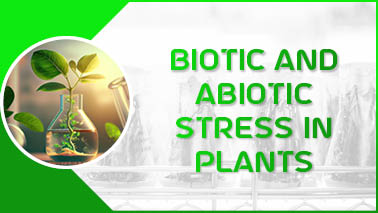
Biotic and abiotic stresses are two major categories of environmental challenges that plants face throughout their lifecycle. While biotic stressors are living organisms such as pathogens and pests, abiotic stressors are non-living factors like drought, salinity, and extreme temperatures. Both types of stress can have detrimental effects on plant growth, development, and productivity, and plants have evolved various mechanisms to cope with and adapt to these challenges.
Plant Responses to Biotic and Abiotic Stress :
Plants have evolved a range of adaptive mechanisms to mitigate the effects of biotic and abiotic stresses. These responses may include:
Morphological Changes:
Physiological Responses:
Biochemical Pathways:
Genetic Regulation:
Management of Biotic and Abiotic Stress in Agriculture :
In agriculture, managing biotic and abiotic stresses is essential for optimizing crop productivity and ensuring food security. Strategies for managing these stresses include:
Crop Rotation and Diversification:
Use of Resistant Varieties:
Integrated Pest Management (IPM):
Soil and Water Management:
By understanding the complex interactions between plants and their environment, researchers and farmers can develop innovative strategies to mitigate the impact of biotic and abiotic stresses on crop production while promoting sustainable agricultural practices.
Tags
Plant Molecular Biology Conferences
Plant Science Conferences 2025 Canada
Plant Biology Conferences 2025 Australia
Agricultural Biotechnology Conferences
Plant Biology Conferences 2025 China
Plant Biotechnology Conferences 2025 Aisa
Plant Science Conferences 2025 USA
Plant Biology Meetings
Plant Pathology Conferences
Plant Biology Conferences
Plant Science Conferences 2025 China
Plant Biology Conferences 2025 Japan
Plant Science Conferences 2025 Europe
Plant Genetics Conferences 2025 USA
Plant Biology Conferences 2025 USA
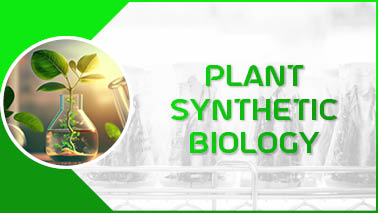
Plant synthetic biology is an interdisciplinary field that applies principles of engineering and molecular biology to design and construct new biological systems or modify existing ones in plants. By harnessing the power of genetic engineering, synthetic biology aims to engineer plants with novel traits, improved productivity, and enhanced resilience to environmental stresses. This emerging field holds great promise for addressing global challenges in agriculture, sustainability, and human health.
Key Components of Plant Synthetic Biology :
Genetic Engineering Tools:
Modular Design Principles:
Computational Modeling:
Applications of Plant Synthetic Biology :
Crop Improvement:
Biopharmaceutical Production:
Bioremediation and Environmental Monitoring:
Bioenergy Production:
Plant synthetic biology holds tremendous potential to revolutionize agriculture, biotechnology, and environmental sustainability. By leveraging the principles of genetic engineering, modular design, and computational modeling, synthetic biologists can engineer plants with tailored traits and functionalities to address pressing global challenges and create a more sustainable future.
Tags
Plant Biotechnology Conferences 2025 Aisa
Plant Science Conferences 2025 Europe
Plant Science Conferences 2025
Plant Genomics Conferences
Plant Biology Conferences 2025 Japan
Plant Molecular Biology Conferences
Plant Biology Conferences 2025 China
Plant Biology Conferences 2025 USA
Plant Molecular Biology Conferences 2025 Europe
Plant Science Conferences 2025 Asia
Plant Genetics Conferences 2025 USA
Plant Biotechnology Conferences
Plant Biology Conferences 2025 Asia
Plant Genetics Conferences
Agricultural Biotechnology Conferences
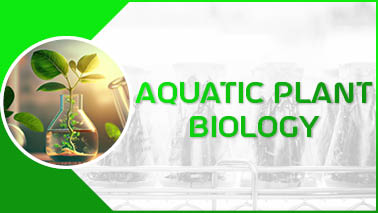
Aquatic plant biology is the study of plants that grow in aquatic environments, including freshwater, marine, and brackish habitats. These plants play crucial roles in aquatic ecosystems, influencing water quality, nutrient cycling, habitat structure, and biodiversity. Understanding the biology of aquatic plants is essential for ecosystem management, conservation, and the sustainable use of aquatic resources.
Characteristics of Aquatic Plants :
Adaptations to Aquatic Environments:
Photosynthetic Adaptations:
Physiological Adaptations to Environmental Factors:
Ecological Roles of Aquatic Plants :
Habitat and Food Source:
Oxygen Production and Carbon Sequestration:
Water Filtration and Nutrient Cycling:
Aquatic plant biology encompasses a diverse array of species with unique adaptations and ecological roles in aquatic ecosystems. By advancing our understanding of aquatic plant biology and ecology, we can better conserve and manage these critical ecosystems, ensuring their long-term sustainability and resilience in the face of environmental challenges.
Tags
Plant Biology Conferences 2024
Plant Science Conferences
Plant Science Conferences 2025 Europe
Plant Molecular Biology Conferences 2025 Europe
Plant Synthetic Biology Conferences
Plant Biology Meetings
Plant Biotechnology Conferences
Plant Biology Conferences 2025 Japan
Plant Biology Conferences 2025 Asia
Plant Biology Conferences
Plant Biology Conferences 2025 China
Plant Biology Conferences 2025 Australia
Agricultural Biotechnology Conferences
Plant Science Conferences 2025 Asia
Plant Science Meetings
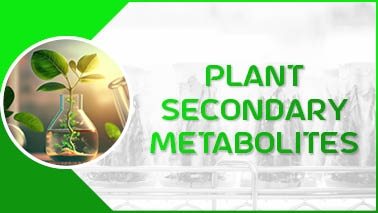
Plant secondary metabolites are organic compounds synthesized by plants that are not directly involved in the essential processes of growth, development, and reproduction. Unlike primary metabolites, which are essential for basic cellular functions, secondary metabolites often serve specialized roles in plant defense, communication, and interaction with the environment. These compounds are synthesized through various biochemical pathways and contribute to the diverse array of chemical defenses and bioactive compounds found in plants.
Types of Plant Secondary Metabolites :
Alkaloids:
Phenolics:
Terpenoids (Isoprenoids):
Glycosides:
Functions of Plant Secondary Metabolites :
Defense Against Herbivores and Pathogens:
Allelopathy:
UV Protection and Abiotic Stress Tolerance:
Importance in Human Health and Agriculture :
Medicinal Compounds:
Nutraceuticals and Dietary Supplements:
Crop Protection and Pest Management:
Plant secondary metabolites are diverse and multifunctional compounds that play vital roles in plant biology, ecology, and human health. Their pharmacological properties, ecological significance, and potential applications in agriculture and biotechnology make them valuable subjects of scientific research and innovation. By advancing our understanding of plant secondary metabolism and harnessing the power of biotechnology, we can unlock the full potential of these natural compounds for human well-being and sustainable development.
Tags
Plant Biology Conferences 2025 China
Plant Synthetic Biology Conferences
Plant Biology Conferences
Plant Science Conferences 2025 China
Plant Science Conferences 2025
Plant Science Meetings
Plant Biotechnology Conferences 2025 Aisa
Plant Science Conferences 2025 Asia
Plant Science Conferences
Plant Genetics Conferences
Plant Biotechnology Conferences
Plant Genetics Conferences 2025 USA
Plant Science Conferences 2025 Europe
Plant Biology Conferences 2025 Asia
Plant Biology Conferences 2025 Australia
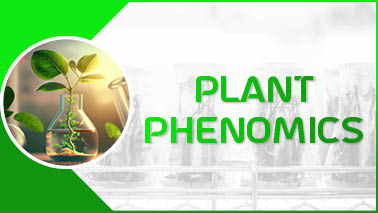
Plant phenomics is a multidisciplinary field that focuses on the comprehensive analysis of plant phenotypes, encompassing their physical, physiological, and biochemical characteristics. Phenomics integrates high-throughput technologies, advanced imaging techniques, and computational tools to quantify and analyze plant traits at various scales, from individual organs to whole plants and ecosystems. By studying plant phenotypes in detail, phenomics aims to understand the genetic and environmental factors that influence plant growth, development, and response to stress, with implications for crop improvement, ecosystem management, and environmental sustainability.
Key Components of Plant Phenomics :
High-Throughput Phenotyping Platforms:
Imaging Technologies:
Sensor Technologies:
Data Analytics and Computational Tools:
Applications of Plant Phenomics :
Plant phenomics is a powerful tool for advancing our understanding of plant biology, improving crop productivity, and addressing global challenges in agriculture, food security, and environmental sustainability. By integrating cutting-edge technologies with interdisciplinary approaches, phenomics enables researchers to unravel the complexity of plant phenotypes and harness the potential of plant genetic diversity for the benefit of society and the environment.
Tags
Plant Science Conferences 2025 Canada
Plant Biology Conferences 2025 Europe
Plant Molecular Biology Conferences
Plant Science Conferences 2025 USA
Plant Synthetic Biology Conferences
Plant Science Meetings
Plant Biology Conferences 2024
Plant Science Conferences 2025
Plant Biology Conferences 2025 Asia
Plant Molecular Biology Conferences 2025 Europe
Plant Genomics Conferences
Plant Biology Meetings
Plant Pathology Conferences
Plant Biotechnology Conferences
Plant Genetics Conferences

Plant-insect interactions encompass a complex array of relationships between plants and insects, ranging from mutualistic to antagonistic interactions. These interactions play fundamental roles in shaping ecological communities, influencing plant evolution, and mediating ecosystem processes.
Types of Plant-Insect Interactions :
Herbivory:
Pollination:
Seed Dispersal:
Mutualisms:
Implications for Agriculture and Conservation :
Integrated Pest Management (IPM):
Conservation of Pollinators:
Preservation of Biodiversity:
Plant-insect interactions are dynamic and multifaceted processes that shape the structure and function of ecosystems worldwide. From herbivory and pollination to mutualisms and antagonistic interactions, these relationships have profound ecological, evolutionary, and socioeconomic implications. By studying plant-insect interactions and their ecological consequences, researchers can develop strategies for sustainable agriculture, biodiversity conservation, and ecosystem management that promote the coexistence of plants and insects and support human well-being and environmental health.
Tags
Plant Biology Conferences 2025
Plant Science Conferences 2025 China
Plant Biology Conferences
Plant Biotechnology Conferences 2025 Aisa
Plant Molecular Biology Conferences
Plant Biology Conferences 2024
Plant Genetics Conferences 2025 USA
Plant Synthetic Biology Conferences
Plant Genetics Conferences
Plant Science Meetings
Plant Science Conferences
Plant Science Conferences 2025 Canada
Plant Genomics Conferences
Plant Biology Conferences 2025 Japan
Plant Biology Conferences 2025 USA
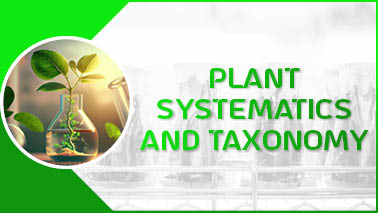
Plant systematics and taxonomy are branches of biology concerned with the classification, identification, and naming of plants, as well as the study of their evolutionary relationships and diversity. These fields play essential roles in organizing and understanding plant biodiversity, facilitating communication among scientists, and informing conservation, agriculture, and other applied disciplines.
Goals of Plant Systematics and Taxonomy :
Classification:
Identification:
Nomenclature:
Evolutionary Relationships:
Applications and Importance :
Plant systematics and taxonomy play vital roles in understanding, documenting, and conserving plant biodiversity, as well as informing agricultural, ecological, and biomedical research. By elucidating the evolutionary relationships, diversity patterns, and ecological interactions of plants, taxonomists contribute to scientific knowledge, environmental stewardship, and the sustainable use of plant resources for the benefit of present and future generations.
Tags
Plant Synthetic Biology Conferences
Plant Genomics Conferences
Plant Science Conferences 2025
Plant Biology Conferences 2024
Plant Genetics Conferences 2025 USA
Plant Biology Conferences
Plant Molecular Biology Conferences
Plant Biology Conferences 2025 USA
Plant Biology Conferences 2025 Europe
Plant Biology Conferences 2025 China
Plant Science Conferences 2025 Canada
Plant Science Conferences 2024
Plant Biology Meetings
Plant Science Conferences 2025 China
Plant Science Conferences 2025 Asia
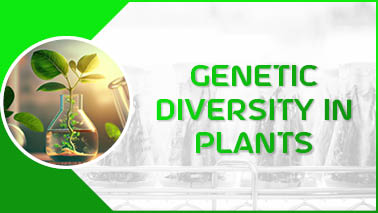
Genetic diversity in plants refers to the variety of genetic traits and variations present within and among populations of plant species. It encompasses differences in DNA sequences, gene expression patterns, allelic frequencies, and phenotypic characteristics, contributing to the adaptability, resilience, and evolutionary potential of plant populations. Genetic diversity is a fundamental component of biodiversity and plays essential roles in plant evolution, adaptation to changing environments, crop improvement, and ecosystem functioning.
Sources of Genetic Diversity :
Mutation and Genetic Variation:
Gene Flow and Migration:
Hybridization and Polyploidy:
Conservation and Management Strategies :
In situ Conservation:
Ex situ Conservation:
Genetic diversity in plants is a cornerstone of biodiversity conservation, ecosystem resilience, and sustainable development. By preserving and enhancing genetic diversity, we can safeguard plant populations, ecosystems, and the evolutionary potential of life on Earth.
Tags
Plant Biology Conferences 2025 Europe
Plant Biology Conferences 2025 USA
Plant Science Conferences 2025 China
Plant Molecular Biology Conferences
Plant Genetics Conferences
Plant Science Conferences 2025
Plant Biology Conferences 2025
Plant Science Meetings
Plant Molecular Biology Conferences 2025 Europe
Plant Biology Conferences 2025 Japan
Plant Science Conferences 2025 Canada
Plant Biology Conferences 2025 Asia
Plant Biology Conferences 2025 Australia
Plant Biotechnology Conferences
Plant Biology Conferences
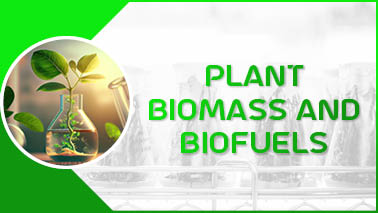
Plant biomass refers to the total amount of organic material produced by plants through photosynthesis, including aboveground and belowground biomass components such as leaves, stems, roots, and reproductive structures. Biomass serves as a renewable and sustainable source of energy, raw materials, and bioproducts for various industrial, agricultural, and environmental applications. Plant biomass can be converted into biofuels through biochemical or thermochemical processes, offering alternatives to fossil fuels and contributing to climate change mitigation, energy security, and rural development.
Types of Plant Biomass :
Lignocellulosic Biomass:
Starch and Sugar Crops:
Oilseed Crops:
Biofuel Production Processes :
Biochemical Conversion:
Thermochemical Conversion:
Advanced Conversion Technologies:
Environmental and Economic Benefits :
Plant biomass and biofuels play significant roles in the transition to a sustainable and low-carbon economy, offering renewable alternatives to fossil fuels and contributing to climate change mitigation, energy security, and rural development. By harnessing the potential of plant biomass through advanced conversion technologies, policy support, and sustainable practices, we can accelerate the transition towards a more resilient, equitable, and environmentally sustainable energy future.
Tags
Plant Biology Conferences 2025 Australia
Plant Genetics Conferences 2025 USA
Plant Biology Conferences 2025 USA
Plant Synthetic Biology Conferences
Plant Biology Conferences 2025
Plant Science Conferences 2025 Asia
Plant Biology Conferences
Plant Science Conferences 2025
Plant Biology Conferences 2025 China
Plant Pathology Conferences
Plant Biotechnology Conferences 2025 Aisa
Plant Biotechnology Conferences
Plant Science Meetings
Agricultural Biotechnology Conferences
Plant Science Conferences 2025 Europe
Advances in plant science and plant biology are rapidly transforming our understanding of plant function and utility. These developments span various fields, including genetics, molecular biology, biotechnology, and ecology, leading to significant breakthroughs in agriculture, environmental management.
These advancements in plant science and biology are not only enhancing our basic understanding of plant life but are also driving innovations that address global challenges such as food security, climate change, and sustainable agriculture.
The global market value for advances in plant science and plant biology is projected to grow significantly in the coming years, driven by the increasing demand for sustainable agricultural practices, improved crop yields, and enhanced plant traits.
Some of the major market categories that are anticipated to expand in the future are shown below, together with their estimated market values:
Agricultural Biotechnology:
Plant Genomics:
Precision Agriculture:
Plant-Based Biologics:
Bioinformatics:
Market insights for plant science and plant biology in Europe:
The market insights for plant science and plant biology in Europe reflect a dynamic landscape driven by innovation, sustainability, and regulatory factors.
Europe is a major player in the global food biotechnology market, with a growing focus on sustainable and efficient agriculture. Therefore, we can expect the European plant science and plant biology market to grow at a healthy CAGR in the range of 7-10% for the period 2024-2030.
While a specific CGAR for plant science and biology research funding in Europe isn't readily available, the overall European agricultural biotechnology market is expected to reach $21.8 billion by 2027, with a CAGR of 8.2%.
Market insights for plant science and plant biology in Middle-East:
In the Middle East, advancements in plant science and plant biology are driven by various factors such as climate conditions, water scarcity, food security concerns, and the need for sustainable agricultural practices.
Specific CAGR data for the Middle East is limited, the global plant genetic engineering market is expected to grow at a CAGR of 7.5% from 2023 to 2031. This indicates strong growth potential in the region as well.
Market insights for plant science and plant biology in Asia Pacific:
In the Asia-Pacific region, plant science and plant biology are vital fields due to the diverse climates, extensive agricultural activities, and increasing concerns about food security, climate change, and environmental sustainability.
The global food biotechnology market is expected to grow at a CAGR of 10.1% during the forecast period 2020-2029. Therefore, we can expect the Asia Pacific plant science and plant biology market to grow at a healthy CAGR in the range of 8-12% for the period 2024-2030.
Plant Science Universities
University of Natural Resources and Life Sciences | Belarusian State University of Agricultural Technology | Belarusian State Academy of Agriculture | Grodno State Agrarian University | Gembloux Agro-Bio Tech | Agricultural University of Plovdiv | University of Forestry | Technical University of Varna | Institute of Agricultural Economics | University of Zagreb | J. J. Strossmayer University of Osijek | University of Zadar | Czech University of Life Sciences Prague | Mendel University Brno | Aarhus University | Royal Veterinary and Agricultural University | University of Copenhagen | Estonian University of Life Sciences | University of Helsinki | formerly Agricultural University of Berlin | Seinäjoki University of Applied Sciences | Humboldt University | Agricultural University of Athens | University of Thessaly | Széchenyi István University | Agricultural University of Iceland | Agricultural State University of Moldova | Banat University of Agricultural Sciences and Veterinary Medicine | Ion Ionescu de la Brad University of Agricultural Sciences and Veterinary Medicine of Iași | University of Agricultural Sciences and Veterinary Medicine of Cluj-Napoca | University of Agronomic Sciences and Veterinary Medicine | Moscow Agricultural Academy | Kazan State Agrarian University | Ural State Agricultural Academy | Chelyabinsk State Agricultural Engineering Academy | Perm State Agricultural Academy | Izhevsk State Agricultural Academy | Kuban State Agrarian University | Don State Agrarian University | Far Eastern State Agrarian University | Orenburg State Agrarian University | Ryazan State Agrotechnological University | Michurinsk State Agrarian University | Far Eastern State Technical Fishing University | Omsk State Agrarian University | Stavropol State Agrarian University | Saint Petersburg State Agrarian University | Saratov State Agrarian University | Voronezh State Agrarian University | Tver State Agricultural Academy | Yaroslavl State Agricultural Academy | Yakutsk State Agricultural Academy | Dagestan State Agricultural Academy | Kurgan State Agricultural Academy | Vyatka State Agricultural Academy | Belgorod State Agricultural University | Penza State Agrarian University | Slovak University of Agriculture | UIUC College of Agriculture | Swedish University of Agricultural Sciences | Konya Food and Agriculture University | Berkshire College of Agriculture | Brooksby Agricultural College | Clinterty Agricultural College | Downton Agricultural College | Royal Agricultural University | Scotland's Rural College | Scottish Agricultural College | University of Nottingham | Centre for Agriculture Excellence, University of the Fraser Valley in Chilliwack | Sustainable Agriculture & Food Systems, Kwantlen Polytechnic University in Richmond | University of British Columbia in Vancouver | University of Arizona | University of Florida College of Agricultural and Life Sciences | University of Georgia College of Agricultural and Environmental Sciences | University of Hawaii | University of Idaho | University of Kentucky College of Agriculture | University of Minnesota College of Food, Agricultural and Natural Resource Sciences | University of Missouri | University of Nebraska | University of Nevada | University of Rhode Island College of the Environment and Life Sciences | University of Wisconsin–Madison | University of Wisconsin–River Falls | University of Wyoming | Utah State University | Virginia Polytechnic Institute and State University | Washington State University | Western Kentucky University | West Virginia State University | West Virginia University | Balkh University | Bamyan University | Herat University | Kabul University | Al-Beroni University | Kandahar University | Azerbaijan State Agricultural University | Bangladesh Agricultural University | Sher-e-Bangla Agricultural University | Bangabandhu Sheikh Mujibur Rahman Agricultural University | Sylhet Agricultural University | Khulna Agricultural University | Patuakhali Science and Technology University | Anhui Agricultural University | China Agricultural University | Fujian Agriculture and Forestry University | Gansu Agricultural University | Huazhong Agricultural University | Hunan Agricultural University | Hebei Agricultural University | Henan Agricultural University | Inner Mongolia Agricultural University | Jiangxi Agricultural University | Nanjing Agricultural University | Northeast Agricultural University | Northwest Agriculture and Forestry University | Qingdao Agricultural University | Shandong Agricultural University | Shanxi Agricultural University | Shenyang Agricultural University | Acharya N. G. Ranga Agricultural University | Aligarh Muslim University | Anand Agricultural University | Annamalai University | Assam Agricultural University | Banaras Hindu University | Bihar Agricultural University | Birsa Agricultural University | Central Agricultural University | Chandra Shekhar Azad University of Agriculture and Technology | Chaudhary Charan Singh Haryana Agricultural University | College of Agricultural Technology | Bogor Agricultural University | College of Agriculture, University of Jiroft | Gorgan University of Agricultural Sciences and Natural Resources | Eghlid University of Agricultural Sciences | Islamic Azad University of Qaemshahr | Agricultural University of Sari | Arak University | Ferdowsi University of Mashhad | Gonbad Kavous University | Guilan University | Isfahan University of Technology | Robert H. Smith Faculty of Agriculture | Food and Environment, Hebrew University of Jerusalem | Kagawa University | Kagoshima University | Kobe University | Kochi University | Shinshu University | Shizuoka University | Tohoku University | Tokyo University of Agriculture and Technology | Tottori University | University of Miyazaki | Universiti Malaysia Kelantan | Universiti Putra Malaysia | Sindh Agriculture University | Muhammad Nawaz Shareef University of Agriculture | Adnan khan shahbazkhail university of Agriculture | University of Agriculture | Bahauddin Zakariya University | Balochistan Agriculture College | Gomal University | University College of Agriculture and Environmental sciences | University of Agriculture | Benguet State University | Pampanga Agricultural College | Central Bicol State University of Agriculture | Central Mindanao University | Central Luzon State University | Negros State College of Agriculture | King Saud University | Agricultural and Food Sciences-King Faisal University | Qassim University | College of Food and Environment Technology in Buraydah | Eastern University of Sri Lanka | Institute of Agro Technology and Rural Science | National Taiwan University | National Chung Hsing University | National Chiayi University | National Pingtung University of Science and Technology | National Ilan University | McGill University | Dalhousie University | Université Laval | University of Alberta | University of British Columbia | University of Calgary | University of Guelph | University of Saskatchewan and University of Prince Edward Island |
Plant Science Associations and Societies
Agricultural Economics Society | Association for International Agricultural and Extension Education | Association for International Agriculture and Rural Development | Association for Vertical Farming | European Association of Agricultural Economists | Food and Agriculture Organization of the United Nations | Guinea Fowl International Association | International Association of Agricultural Economists | International Association of students in Agricultural and related Sciences | International Biocontrol Manufacturers Association | International Federation of Agricultural Journalists | International Food and Agribusiness Management Association | International Olive Council | International Organization for Biological Control | International Society for Horticultural Science | International Society of Precision Agriculture | Tropical Agriculture Association | World Veterinary Poultry Association | World Wide Opportunities on Organic Farms | World's Poultry Science Association | American Farm Bureau Federation | American Poultry Association | National FFA Organization | Institute of Food and Agricultural Sciences | The National Grange of the Order of Patrons of Husbandry | National Farmers Union | Agribusiness Council | Agriculture Council of America | American Society of Agricultural Consultants | American Society of Farm Managers and Rural Appraisers | National Council of Agricultural Employers | Tropical Agricultural Association | Biotechnology Industry Organization | Asian Association for Agricultural Engineering | World Sustainable Agriculture Association | Agricultural Biotechnology Center | Agricultural Biotechnology for Sustainable Productivity | Consultative Group on International Agricultural Research | Consortium for International Crop Protection | Council for Agricultural Science and Technology | European Commission for the Control of Foot-and-Mouth Disease | European Food Information Council | European Initiative for Biotechnology Education | Farm Animal Reform Movement | Institute of Food Research | Institute of Food Science & Technology | Institute of Food Technologists | International Centre for Research in Agro forestry | International Federation of Organic Agriculture Movements | International Food Information Council | International Food Policy Research Institute | International Society for Ecology and Culture | National Agricultural Biotechnology Council | Tree Fruit Research & Extension Center | Media for Environment, Science, Health And Agriculture Association | Food and Agriculture Organization of the United Nations | World Agricultural Information Centre (WAICENT) Portal | AGRIS/CARIS - Centre of Information Management for International Agricultural Research | World Food Summit | International Fund for Agriculture Development | UN International Centre for Genetic Engineering and Biotechnology | United Nations Development Programme | World Food Programme | Food and Agricultural Organization | Consultative Group on International Agricultural Research | Africa Rice Center | Centro International de Agriculture Tropical | Center for International Forestry Research | International Center for Agricultural Research in the Dry Areas | International Crops Research Institute for the Semi-Arid Tropics | International Food Policy Research Institute | International Institute of Tropical Agriculture | International Rice Research Institute | SAARC Agriculture Centre |
Plant Science Journals
Agro forestry Systems | Agronomy for Sustainable Development | Annals of Forest Science | Biology and Fertility of Soils | European Journal of Forest Research | European Journal of Wood and Wood Products | International Journal of Plant Production | Journal of Forestry Research | New Forests | Nutrient Cycling in Agroecosystems | Precision Agriculture | Small-scale Forestry | Tree Genetics & Genomes | Plant Cell | Nature Plants | Plant Biotechnology Journal | Journal of Ecology | Journal of Experimental Botany | Plant, Cell and Environment | Critical Reviews in Plant Sciences | Plant and Cell Physiology | Journal of Systematics and Evolution | Molecular Plant Pathology | Journal of Integrative Plant Biology | Plant Molecular Biology | Horticulture Research | Journal of Vegetation Science | Tree Physiology | Botanical Journal of the Linnean Society | European Journal of Agronomy | American Journal of Botany | Crop Journal | Perspectives in Plant Ecology, Evolution and Systematic | Asian Journal of Plant Science & Research | Journal of Natural Product and Plant Resources | Journal of Biodiversity Management & Forestry | An International Journal of Plant Research | Journal of Plant Physiology & Pathology | Journal of Phylogenetics & Evolutionary Biology | Advances in Crop Science and Technology | Rice Research | Journal of Botanical Sciences | Journal of Agriculture Sciences | An International Journal of Plant Research | Trends in Plant Science | BMC Plant Biology | Advances in Plant Biochemistry and Molecular Biology | Journal of Plant Breeding and Genetics | International Journal of Plant Breeding and Genetics | Annual Review of Plant Biology | The International Journal of Plant Reproductive Biology | Journal of Agricultural Science | Post harvest Biology and Technology | Plant Signaling & Behavior | Annals of Botany | Annual Review of Plant Biology | Annual Review of Phytopathology | Critical Reviews in Plant Sciences | Current Opinion in Plant Biology | Journal of Natural Products | Journal of Vegetation Science | Molecular Breeding | Molecular Plant | Molecular Plant-Microbe Interactions | Molecular Plant Pathology | New Phytologist | Photosynthesis Research | Physiologia Plantarum | Phytochemistry | Phytochemistry Reviews | Phytomedicine | hytopathology | Plant Biotechnology Journal | Plant Cell and Environment | Plant Cell Tissue and Organ Culture | Plant Journal | Plant Molecular Biology | Plant Molecular Biology Reporter | Plant Physiology | Plant Physiology and Biochemistry | Plant Science | Theoretical and Applied Genetics | Trends in Plant Science | Crop physiology | Agriculture, Forestry and Fisheries | American Journal of Agriculture and Forestry | Journal of Diseases and Medicinal Plants | International Journal of Applied Agricultural Sciences | International Journal of Agricultural Economics | American Journal of Plant Biology | Research journal of Plant Pathology | Journal of stem cell Biology and transplantation | Journal of Plant Sciences and agricultural research | Asian Journal of Plant Science& Research | International Journal of Plant Sciences |
Contact us now and we will make your event unique & unforgettable
All numbers indicates percentage %
Europe
North America
Middle East
Asia Pacific
Africa
All numbers indicates percentage %
Plant Science Researchers
Scientists
Faculty
Biotechnologists & Molecular Biologists
Crop Scientists
Ecologists & Environmental Scientists
Seed Industry Professionals & Agricultural Development Organizations
Business Entrepreneurs & Companies

Low-temperature plasma (LTP) is a weakly ionized noble gas or ambient air comprised of free electrons and positively charged ions. It is increasingly used in agriculture for microbial disinfection of foods, enzymatic inactivation, enhancing seed germination, and plant growth, among many others. Three experiments were conducted t

Phytophthora blight, caused by Phytophthora capsici, is an important disease of cucurbits crops worldwide. Crop losses of 100% by P. capsici have been recorded in commercial cucurbit fields in Illinois. P. capsici can infect cucurbit plants at all growth stages, causing seedling death, vine infection, leaf spot, and fruit rot.

Tea production and quality were largely determined by the many genetic and biochemical characteristics that occur in tea plant cultivars. Worldwide, tea is consumed for its pleasing and refreshing effects due to its caffeine content. Here, we performed the transcriptomic analyses of the leaves of two tea cultivars (Camellia sine

Cadmium (Cd) is a hazardous pollutant, and concern over its enrichment in crops' edible portions has spread throughout the world. It is unclear whether algal polysaccharides-selenium nanoparticles (AP-SNPs) can mitigate Cd stress by regulating carbon-nitrogen metabolism. Herein, we found that the application of 100 µM AP-SNPs c

The design and development of a fluorescence sensor aimed at detecting and quantifying trace amounts of toxic transition metal ions within environmental, biological, and aquatic samples has garnered significant attention from diagnostic and testing laboratories, driven by the imperative to mitigate the health risks associated wi

Ochroma pyramidale (Cav. Ex Lam.) is a rapidly growing pioneer tree native to the Americas. This species is important for rehabilitating degraded areas as well as commercially due to the wood`s low density and high resistance, making it useful for producing structural cores and lightweight plywood, as well as in the wind e

Conventional soil tillage becomes one of the major causes of concern for soil sickness rendering far reaching adverse consequences in the sustainable system productivity. The situation was aggravated while crop stubble was not utilized in right perspective. Better understanding these alarming issues insisted us to design a field

In soil-less agriculture, hydroponics is recognized as a promising farming system for producing uniformly high-quality plant material in significantly less time. This investigation, for the first time, examines the effects of different cultivation conditions—open-field, poly-house, and hydroponic on morpho-physiological traits

Oxidative stress is an imbalance between free reactive oxygen species and antioxidant defences leading to neurological and other chronic disorders. The interaction between food and gut microbiota and their metabolites significantly reduces oxidative stress and influences host physiology and metabolism. This process mainly involv




